
























The Abaco collection by Divani is sure to please our connoisseurs of comfort. With feather blend seats and backs indulge in a luxury seating experience.
If a retro vibe is more your pace, Campio also revisits an era where architectural flair meets furniture. The Maeve collection features a sleek track arm met with a soft curved base and sophisticated high leg design

Choose from 8 classic arm styles, select your desired seat and back and with endless fabric and leather options, you can customize this series to be all that you need to make it yours.






It’s officially tax season, which means your mailbox is probably full of envelopes marked “Important tax documents enclosed.” With so many documents such as T4s, T4RIFs and various T5008s, it can be overwhelming to understand what each form means. Let’s look at how your investments are taxed.
Interest income and how it’s taxed
Interest is the income you receive from certain types of accounts and investments or from lending money to someone else. The most common accounts and investments that produce interest income include:
• Interest on savings accounts and guaranteed investment certificates (GICs)
• Interest on fixed-income investments, such as government or corporate bonds. Interest is taxed as ordinary income, with no special tax treatment
Dividends and how they’re taxed
A dividend is a distribution by a company to its shareholders, although not all companies pay dividends. Dividends received from Canadian companies are eligible for preferential tax treatment, while dividends earned from any foreign companies are taxed as ordinary income.
Canadian dividends are taxed according to the type; eligible or non-eligible. Generally speaking, eligible dividends are paid by publicly traded companies such as those on the Toronto Stock Exchange, while non-eligible dividends are paid by private companies which are known as Canadian-Controlled Private Corporations (CCPCs).
Both eligible and non-eligible dividends from Canadian corporations are eligible for the dividend tax credit, although the calculations are different depending on the type of dividend. In both cases, however, the dividend tax credit helps reduce the amount of tax owing and hence dividend income is taxed more favourably than interest income..
gains and how they’re taxed
A capital gain is an increase in an asset’s value above the original purchase price. Capital gains are generally taxable when ‘realized’, which is generally when the asset is sold. However, capital gains can also be realized in the form of a mutual fund capital gain distribution, meaning you could have capital gains even if you didn’t sell the fund. These distributions are typically reported to you on a T3 or T5 depending on the type of fund.
Capital gains don’t have a specific tax rate, but rather, have an ‘inclusion rate’, which means that a portion of the capital gain is included in your income. The Government of Canada proposed changes to the capital gains inclusion rate. As of January 1, 2026, your total realized capital gains from all sources in the year are $250,000 or below, 50% of your gain is taxed at your marginal tax rate. For the component of your total realized capital gain above $250,000 in a particular year, 66.67% of the capital gain will be taxed at your marginal tax rate.



IT USED TO BE A FIREHALL. You might be familiar with the location. At 5650 Tecumseh Road East—right between Ferndale and Glendale—now stands Sacwal Flooring Centres: an exciting local business owned and operated by Kim Wuerch.
“I’ve been in the flooring industry for over 30 years, working closely with homeowners, designers, and builders throughout Windsor and surrounding areas,” Kim reports. “Flooring has never just been a job—it’s my passion. I love what I do, and I’m honoured to have earned the trust and loyalty of so many amazing clients over the years.”
This isn’t just another store opening—it’s a full-circle moment for Kim.
“This building holds deep personal meaning for me,” Kim reports. “My uncle was a firefighter at this very firehall, and as a young girl, I would visit him and the other firefighters. He was a strong father figure in my life and those memories shaped who I am. Being able to preserve this space and breathe new life into it as a local business is something that touches my heart.”
What truly sets Sacwal Flooring apart is not just the sheer depth and breadth of product knowledge that comes from decades in the industry. At Sacwal Flooring, Kim treats every single prospective client like a valued friend.
“We’re more than just a store,” Kim states. “We’re about community, quality, and connection. We offer an extensive range of beautiful, durable flooring solutions—hardwood, vinyl, tile, carpet, and more—with expert advice and genuine care behind every recommendation.”
Kim’s goal is simple: to help you create beautiful spaces that feel like home.



“We care about all our friends and neighbors,” Kim explains. “We treat everyone as though they’re our first and last house We’re also five stores strong—which gives us significant buying power. Whenever we get a new product we share it amongst our various locations, which in turn allows our customers a better price.”
And now, Kim invites everyone to come in and forge some exciting new connections.
“Whether you’re a longtime customer, a new homeowner, or a local builder, I invite you to stop in, say hello, and see what we’ve created,” Kim states. “Let’s build something beautiful together— right here in Windsor, supporting local and celebrating Canadian entrepreneurship. Come in and check us out! We have great prices and great service. We won’t disappoint.”
More information about Sacwal Flooring is available at 519-964-2299 and at sacwalflooringcentres.com. Check out their in-stock specials @sacwalwindsor on Facebook.









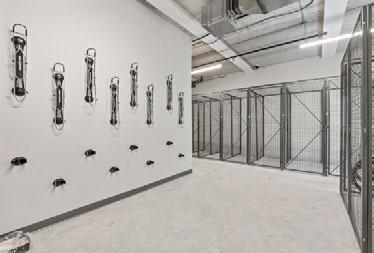
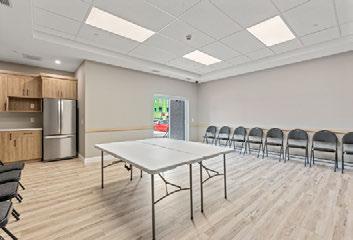




PUBLISHER/EDITOR Robert E. Robinson
CONTRIBUTING Matthew St. Amand
WRITERS Serafina Piasentin
Paula Just
Michael Seguin
Alysia Therrien
CREATIVE DIRECTOR Carol Garant
ART DIRECTOR Michael Pietrangelo
PRODUCTION George Sharpe
PHOTOGRAPHERS
John Liviero
Dax Melmer
Tyler Middlebrook
Heike Delmore
Michael Pietrangelo
Gene Schilling
Kelsey Schumacher
Gabriela Digesu
Serafina Piasentin
OnLocation
Todd Heslop
ADVERTISING SALES 519-979-9716 sales@windsorlife.com
VICE PRESIDENT ADVERTISING SALES Charles Thompson 519-818-7352
ADVERTISING SALES ACCOUNT EXECUTIVE Leslie Campbell 519-567-0603
ADVERTISING SALES ACCOUNT EXECUTIVE Lisa (Lise) Lansue 519-857-6491
ADVERTISING SALES ACCOUNT EXECUTIVE Sam Sinjari 519-567-3020
WINDSOR LIFE MAGAZINE 318-5060 Tecumseh Road East Windsor, Ontario N8T 1C1 Tel: 519-979-5433 www.windsorlife.com







WHAT WE SEE DEFINES US, captures us and intrigues us, but it also can make us believe. What if that something we were seeing and believing in was ourselves?
Heike Delmore Photography offers the unique opportunity to construct your personal brand through the lens of the camera. By featuring the heart and soul of your company, you, she provides an experience that elevates the mind and body.
When you choose Heike Delmore for your personal branding, you will begin with a one-on-one clarity consultation. This consultation is not for Heike, but for you. Who do you want to see on the other side of that camera? Who are you becoming? As Heike explains it is important to, “really get that clarity on how you want to be perceived moving forward”. Oftentimes the ideas are there, but they are just vague. Heike leads you to consider how the future you looks, solves problems and talks to others. This step is all about planting the seed of transformation.
After the clarity session, it is time to move in front of the camera. You won’t hear things like “smile” or “say cheese” from Heike. What you will hear is those reminders of who you are and who you wish to become. It is in those moments where you are led to step into that version of yourself. “Sometimes people feel like their vision is so far off or it will happen one day, but we are doing it right then and there with the camera up,” exclaims Heike. Your session is your chance to walk into your light and experience all the sensations connected to this grounded, certain, rendition of you. It is already there, who you are and what you stand for, the camera just captures it.
Once you are photographed, there is only one thing left to do: share it. This process has confirmed your marketing needs and now what you have at the end of your finger tips is, “a library of images you can go to for any of your messaging,” says Heike. It is very strategic and purposeful, as she puts together your visual brand strategy. You and your brand are very unique, so it is important to have images that compliment your identity.
The difference between a Heike Delmore Photography experience and a standard headshot sitting is that Heike allows you to become conscious of what defines you. Her award-winning, unique advertising background allows her to assist you in creating that distinctness you are looking for. Together, you craft how you would like to be perceived and then all the sudden, that person is staring back at you. This effort is you, exists in you and is now in front of you. “That visibility reinforces that identity,” says Heike, “it does it for my clients, but also for those who are watching”.
What happens next is when you start using your collection of images for your personal branding, other people are now able to see the future you as you right now. They are ready to treat you as that version of you, right now! The external matches the internal and as Heike points out, “it almost fast-forwards your goals and growth”.
If you are ready to align your branding to your visions of the future, reach out to Heike Delmore at delmorephotography.com. You can also follow her personal branding transformations on Instagram: @heikedelmore.

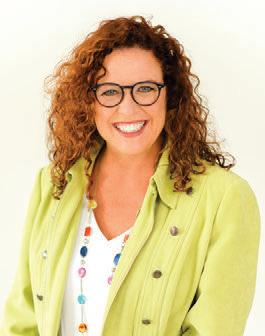
Photography by Heike Delmore


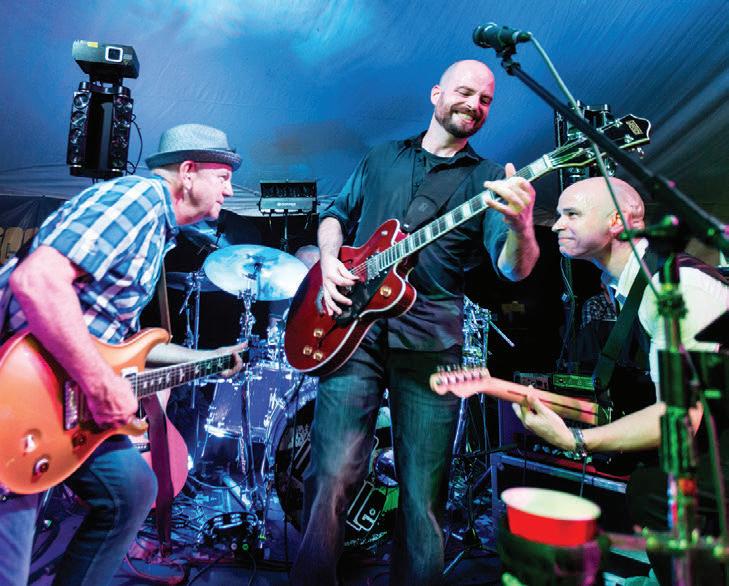
AT SEATON SUNROOMS, evolution is an integral part of their blueprint. For over five decades, the Windsor-based, family-owned company has been helping homeowners across Essex County create elegant and functional living spaces. But today, the company is more than sunrooms. With new products, new partnerships and a commitment to innovation, the business is redefining what outdoor-inspired living can be.
One of the newest additions to the lineup is the premium vinyl flooring tile that snaps together seamlessly and is installed directly over concrete. Designed to mimic the warm, natural look of real wood decking, these tiles offer an instant makeover without the need for major construction.
“This product is a game changer,” says Brooke Watorek, who runs Seaton Sunrooms alongside her husband, Jason. “You can completely transform a dull concrete patio into something that looks like a luxury deck. And because the tiles snap together, installation is quick and clean.”
As always, Seaton Sunrooms continues to champion Canadian-made products, a value that has earned them the trust of homeowners for generations. From their proprietary aluminum framing systems to their precision-cut glass and roof panels, quality is at the core of everything they do. Founded in 1974, the company continues the tradition of personalized service in Windsor-Essex.
Why customers choose Seaton Sunrooms:
• All materials are locally sourced and built to withstand Canadian seasons.
• Every solution is custom-designed—no prefab kits, no shortcuts.
• Precision installation: Jason personally measures every project down to the sixteenth of an inch.
• The team can handle complex designs with cur ves, angles, stonework, or custom arches.
• Fast installation of motorized screens and larger sunrooms.
• Friendly, honest and customer-first service.


With a growing range of customizable options, Seaton Sunrooms empowers clients to create spaces that truly reflect their lifestyles. Their team is passionate about transforming everyday areas into something extraordinary. To help customers fully visualize and furnish their dream spaces, the company is partnering with a wholesaler to introduce a brand-new furniture catalog. Soon, clients will be able to select stylish, weather-appropriate furniture right from the showroom or online.
“ We want to help people picture the full experience,” Sidney Wickham, office admin, explains. “It’s one thing to see an empty sunroom, but it’s another to imagine it with a cozy loveseat, a dining table, or accent chairs that make it feel like a true extension of your home.”
If you prefer online, the “Contact Us” page features a fillable form that allows homeowners to submit their contact details and upload photos of their property. In response, they provide a preliminary quote along with images of similar completed projects. If the homeowner wishes to proceed, a representative will visit the site to take measurements and finalize the quote.
Whether you’re planning a serene reading nook, an indoor-outdoor dining area, or a pest-free patio you can relax on, Seaton Sunrooms is ready to help you bring that vision to life, down to the last detail. Every product added to the lineup is chosen to enhance comfort, value and beauty.
Ready to re-imagine your space? Start with the experts who bring the outdoors inside and keep raising the bar.
Visit www.seatonsunrooms.com or call 519-944-6006 to book a consultation and request your free quote today.





As I finish the final check of this edition of Windsor Life Magazine I, once again, am reminded of the great people who reside in Windsor/Essex, Chatham/Kent.
In these pages you will find stories of people giving, sharing and caring. Like the story of the Windsor couple who, without hesitation, braved through fire to save the life of a young driver involved in a horrific automobile accident.
The group of Windsor student nurses who took their newly learned skills to Tanzania to help people who, without their help, would not have badly needed medical attention.
Windsor businesspeople, along with the teaching skills of educators at St. Clair college and Windsor-Essex Catholic District School Board, come together in teaching young students trades that are so very much needed in many walks of life. From construction to engineering, they are learning to make a career using their minds and their hands.
We learn of a pilot project, in conjunction with Royal Canadian Legion 255, which allows the blind people of our community to enjoy the game of darts. The project was a great success and the group is looking forward to continuing after Labour Day.
On the lighter side, we visit Noel, a craftsman from Chatham, who makes musical instruments out of just about anything. And they are playable.
Josh Indig took his love of racing and an engineering degree to a very high level in motorsports. He works with some of the stars of the racing world in the General Motors Motorsports simulation department in Concord, North Carolina. A great achievement for a 27-year-old who started his career in a go-kart on a racetrack near Leamington.
Windsor Life writer, Serafina Piasentin, takes you on a hiking trip through Machu Picchu. Her photos and description of the trip should entice you to enjoy other parts of the world.
Finally, every one of us has encountered the voice of Patty Handysides. Her voice has been filling the Windsor airwaves for 40 years. The story of how she started and how she has maintained her career will be of interest to many.
These are just a few of the stories that make our community the fabulous place it is.
Bob Robinson




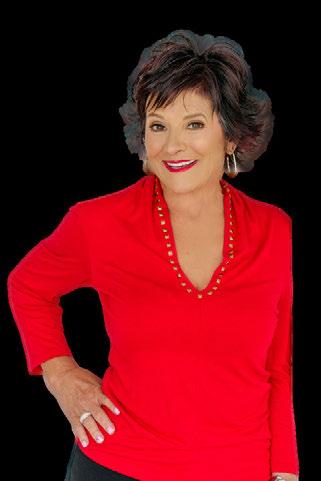








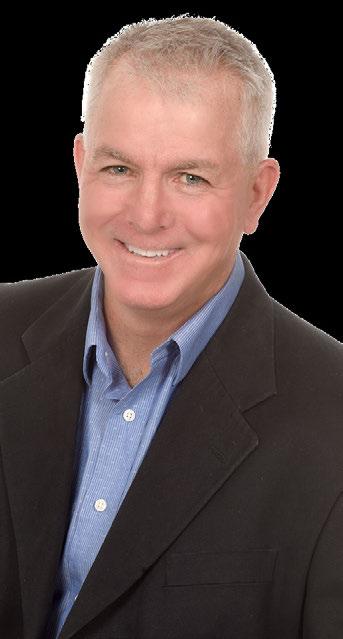

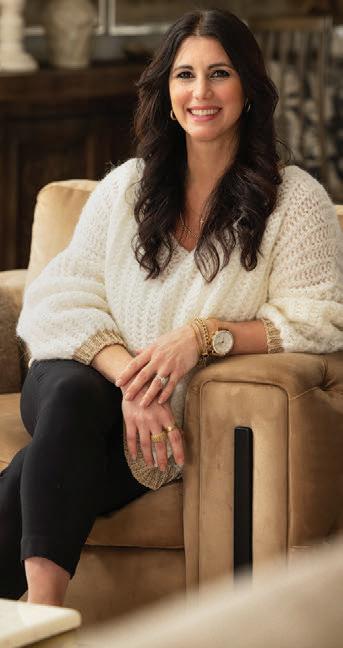



STORY BY MATTHEW ST. AMAND / PHOTOGRAPHY BY JOHN LIVIERO
WHEN IT COMES to broadcasting and newsgathering in the City of Windsor, for the past forty years, Patty Handysides has lived up to her aptly bestowed name. She is handy on all sides.
This year, Patty celebrates forty years as an integral part of CKLW.
It is tempting to view Patty’s time there as one seamless, forty-year-long continuum, but her career in broadcasting more
resembles her show The Shift, which is divided into multiple separate segments, each with its own details and demands.
Not only is Patty a matchless voice in local radio, but she also works within a very unique market in the larger media landscape.
“I think we’re really lucky in Windsor that we still have local programming,” Patty says. “Unfortunately, it is disappearing—




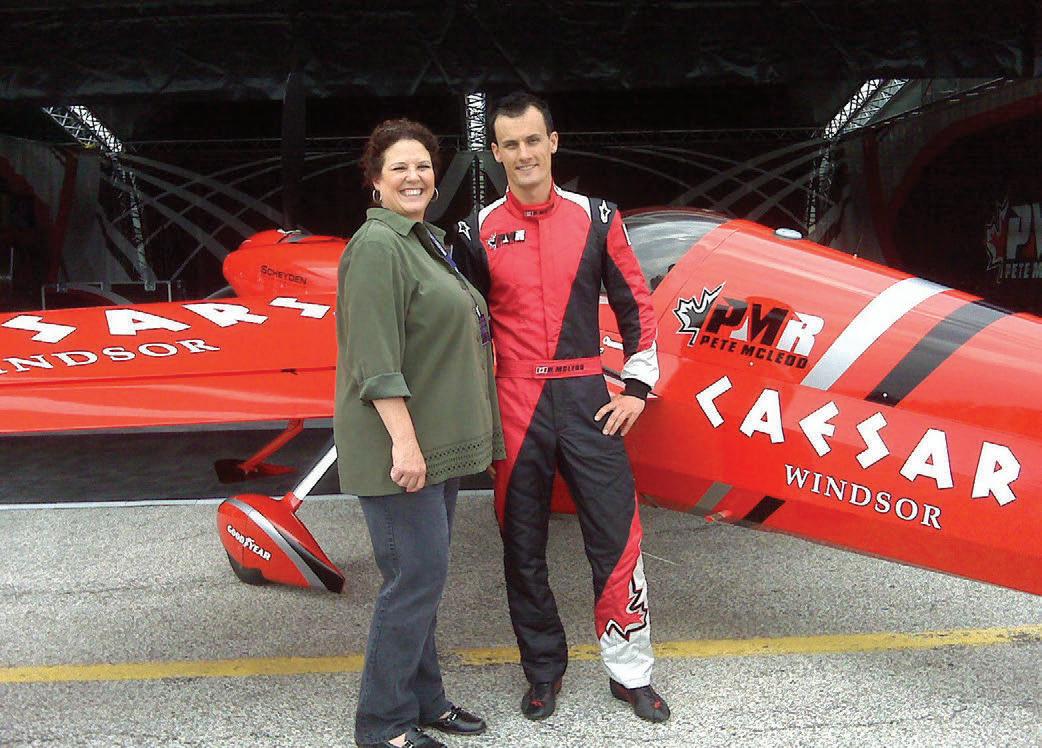
so many outlets are going to a national feed. Many of the talk stations are gone. Competition is tough with social media. I feel very fortunate to be here and have listeners who stay with us.”
One does not have to look far to see where Patty got her tenacity, drive, and energy.
“My mother is ninety-three years old and still lives in her home, cuts her own grass,” Patty says.
Patty is a Windsor native, growing up in the Roseland neighbourhood with her family: Isabell Dalgleish, Bob Handysides as well as siblings Nancy and David.
Patty attended Ivor Chandler public school and Vincent Massey Secondary School. It was during high school that an interest in news began forming in her mind.
“Something about news appealed to me,” Patty says. “I enjoyed English class


in high school. I learned to love words and knew I wanted to get into news in some way.”
Following graduation, she attended Centennial College in Toronto, where she took a news writing course.
“I loved that course!” Patty recalls. “I didn’t know exactly what I wanted to do with it, but gathering facts, telling a story—a true story—really appealed to me. That was back in the pre-Internet days, so gathering information involved a lot of legwork and investigation.”
Her first job out of college, Patty was hired to work in the newsroom at CBC Windsor.
“I was there for three years, and in 1985, I was hired to work at CKLW,” she remembers. “It was great—there was always something happening. We had lots of listeners who lived in the United States, so we gathered news from everywhere. Back then it was all men in the newsroom, but they were welcoming.”
Just as Patty got up to speed in the CKLW newsroom, a program director wanted her to work as a disk jockey.
“I had never done that, but the program director said he liked my voice,” Patty explains. “They had me training with the legendary Johnny Williams, one of the Big-8 jocks. I did that for about a year and a half.”
Shifting gears has never been a problem for Patty. Following her time as a DJ, she worked as a news anchor.


“It was the best of both worlds,” she says. “I enjoyed being on-air, but I also wrote all of my news. I had a great time in the newsroom—it was bigger back then, of course, very fast-paced. I was always learning. The other reporters were very experienced. We were really good at deadlines. I kept up with them!”
The only constant in that environment was change.
CHUM bought CKLW in 1993. It was a tumultuous acquisition.
“They let a lot of people go,” Patty says. “I thought I would stay in news, but they put me back on the air as a DJ.”
She was paired with Tom Shannon, this time, doing an “oldies” morning show: Tommy and Patty in the Morning.
“I loved working with Tom—he was another of the old Big-8 jocks,” Patty says. “We did that for about eighteen months and then I was back in the newsroom. What can I say? I love being a reporter! That was what I was doing at CBC. I loved being on the scene where things were happening. There was so much competition between CBC, the Windsor Star. We were always trying s
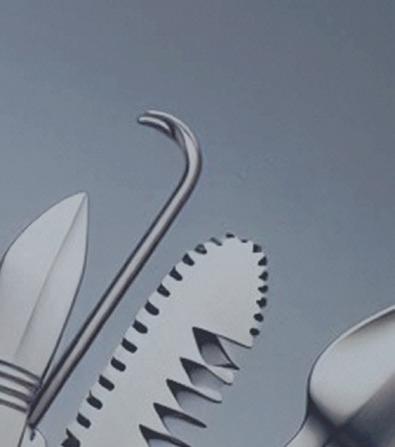















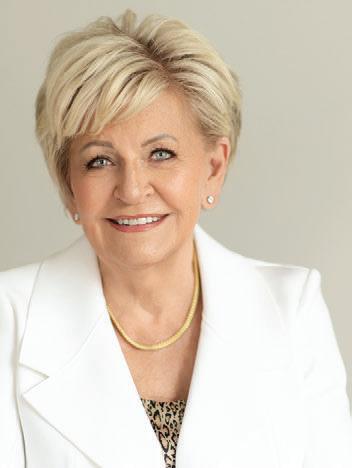

to be the first to a story, but we were also friends.”
And Patty could be pretty hands-on with her stories.
“I loved the action,” she says. “I once flew in a Canadian helicopter to a moving Canadian navy ship on Lake Erie. I sailed with them for a little while... on the HMSC Ottawa. I went up in a two-seater stunt plane, the pilot did ‘barrel rolls’ and we glided, at times, with the engine turned off. That was so much fun. Plus, I repelled off the top of the casino building.”
Patty is also a licensed pyrotechnician.
“I have been for twenty-five years,” she says. “I do fireworks shows—big fireworks shows!”
Patty did reporting right up until 2015. That year, she got the show she has now, but at that time hosted it with Paul McDonald and Kathie McMann. It evolved over time until Patty took over hosting duties alone.
“My show, now, is more news-oriented,” she says. “Listeners are driving home from work and they’re not as able to text or call in. I look at the news of the day and choose whatever I think listeners should hear about.”
As anyone who listens to Patty knows, she is not sitting there reading headlines. Her four-hour show is broken up into eight segments
“Sometimes there is just too much information,” she says. “I like to do fun things, too. The other day, I was talking to Dr. Dan Riskin, evolutionary biologist and host of Daily Planet.”
It is a rare milestone for a person to work in the same company for forty years, much less in the same building. Patty’s plans for the future are just to keep on keeping on.
“I have stayed in the same building all these years, but the job has changed many times,” Patty says. “So, you never know. But it’s very humbling to know that so many people are listening.”
Among her mentors who saw her along the way, Patty fondly remembers high school English teacher Bob Marchand, who taught her to love writing as well as the venerable Gino Conte, a reporter who retired from CBC Windsor after forty-one years in the business.
“Gino was brilliant,” Patty says. “One thing he told me was: ‘You won’t get a promotion lying in a story. Don’t do it,’ and I never did.”
Patty is host of The Shift, which airs on AM800 each weekday between two and six p.m. and she can be reached at pattyh@ am800cklw.com. WLM













STORY BY MICHAEL SEGUIN
PHOTOGRAPHY BY DAX MELMER/ST. CLAIR COLLEGE
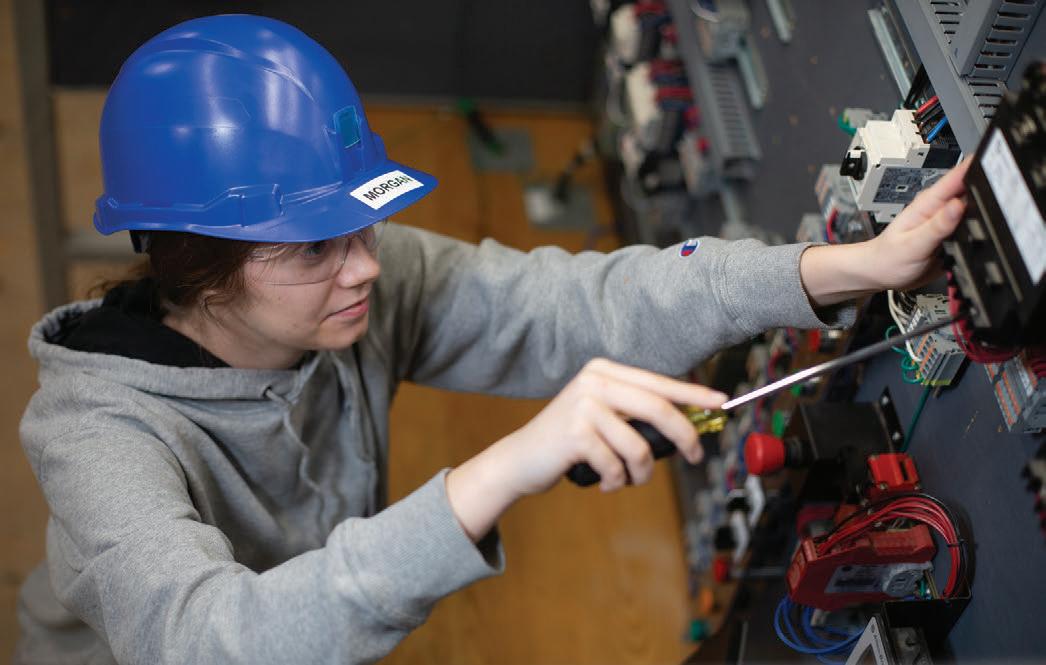
LOOK AROUND, no matter where you are—with a few possible exceptions—you’ll likely see some familiar landmarks. Roads. Houses. Buildings. Power cables. Cars. Bathrooms and kitchens. Light fixtures. Ring cameras.
All these various features form the unquestioned bedrock of our civilization. And such landmarks demand an entire skilled workforce to both install and maintain.
And fortunately, there are some exciting new developments in the skilled trades which mean that our next generation of Windsor’s workers will receive the best possible education.
One of these new developments is the Windsor-Essex Catholic District School Board (WECDSB) Construction Academy—a unique program that offers a hands-on learning environment.
“The genesis of the academy was this: if a student in high school wants to pursue the skilled trades, how can we tailor their education to prepare them for that?” Cory McAiney, the Ontario Youth Apprenticeship Program (OYAP) and Co-op Consultant at the WECDSB, explains. “We want to give them all the benefits of a postsecondary apprenticeship program while they’re still in high school.”

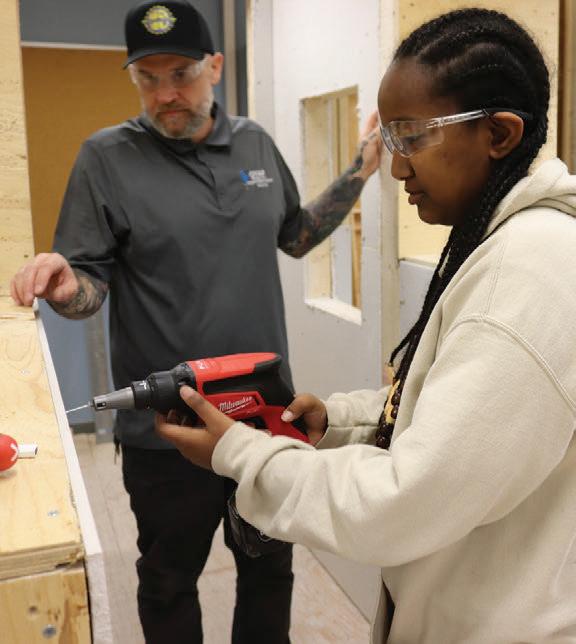
The Construction Academy is a two-year program. For the first semester, they offer a variety of emphasis courses where students can learn more about a specific trade.
“ We have emphasis courses in brick and stone masonry, plumbing, carpentry, welding and electrical,” Cory states. “And every one of those courses is taught by a Red Seal tradesperson. We’re not looking for a traditional academic teacher. We’re looking for a certified teacher that has come directly from the industry with Red Seal Tradesperson credentials.”
And Cor y is no exception to this rule. While currently an educator for almost 27 years, Cory is a Red Seal carpenter himself—meaning that as he can provide his students with a uniquely advantageous glimpse into his trade.
And one of his former students is also heavily involved in the Construction Academy. Brent Klundert, Owner of BK Cornerstone Design Build and Chair of the Windsor-Essex Home Builder’s Association (WEHBA), chimes in on how valuable an experience this opportunity truly is.
“ We’ve noticed that there were a lot of gaps that have opened in education,” Brent states. “So we decided that it was important to garner talent at a young age. Some kids aren’t going to pursue college or university—not because they don’t have the capabilities, but because they see a better future for themselves working with their hands. So this is all about servicing both the industry and these talented young people.”
When the board developed the curriculum for the program, they consulted the WEHBA and focused on what employers were searching for in prospective apprentices.
“ We thought about what employers wanted to see from students straight out of secondary school,” Brent states. “A lot of students were arriving at their first jobsite with no formal training with tools. Another ongoing goal was just reaching the kids early enough to show them this is a great career if they like building things. That way, when they enter secondary school from elementary, they’re more motivated to succeed because they want to set themselves up for success.”
And the Construction Academy has both addressed and surpassed those concerns. Students who complete the program are given a dramatic head-start to success in the skilled trades.
“ When our students enter their first co-op, they have a huge advantage,” Cory maintains. “They have all their personal s


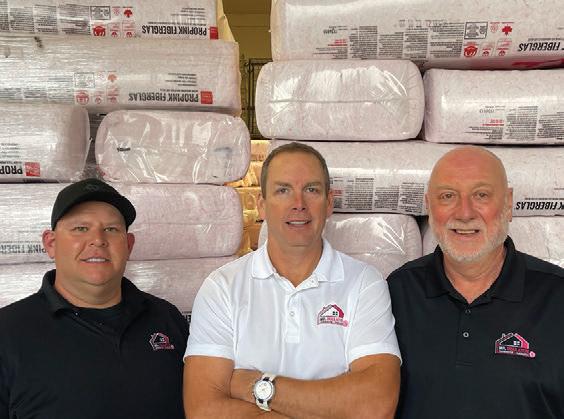

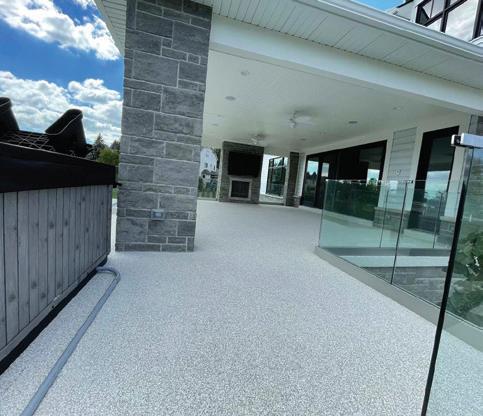


protective equipment, starter tools, and have completed numerous safety certifications. Normally an employer would have to send an apprentice away for a couple days to obtain all these. But when our students arrive at the jobsite, they’re all set. On top of that, they’ve spent five months working with electricians, plumbers, brick-andstone masons and welders—among others.”
Feedback from prospective employers has been glowing.
“They’ll tell us that they’ve never had coop students like this before,” Cory states. “That they’re incredibly advanced. Almost immediately, employers will sign them because they recognize their value. And every hour of their co-op counts towards their apprenticeship. We’ll have students who’ve completed a thousand hours before they’ve even finished high school.”


Perhaps most significantly, one of the core tenets of the Construction Academy is preparing our next generation of builders and skilled tradespeople with navigating a changing industry.
“There are new techniques in terms of building processes that always come out,” Brent states. “We’re constantly being asked if there’s anything new that the kids need to learn. ‘Are there any new products to be aware of? Anything that you can see coming down?’ And sometimes it’s as simple as the new paperless world we’re living in where schematics are on iPads. So we try to make sure that they’re aware of this new electronic world and how that’s changing the workplace and the industry. But the nice thing about our world is that basic principles don’t change all that much. We’re still using the same techniques that my grandfather

t is not uncommon for some of the Construction Academy students to receive a job offer straight out of high school.
emarkable as WECDSB’s Construction Academy is, there are other institutions making waves in the industry. St. Clair College’s School of Skilled Trades offers a number of exciting, innovative opportunities for future students.




We have a total of 34 programs, including apprenticeships,” Lido Zuccato, Chair at St. Clair College’s School of Skilled Trades & Apprenticeships, explains. “Our graduates are in high demand. A lot of employers come in throughout the semester to speak to our classes. Many of our students are then sought out for careers before we’ve even signed their degree.”
Lido takes some time to elaborate on how the different trades have ebbed and
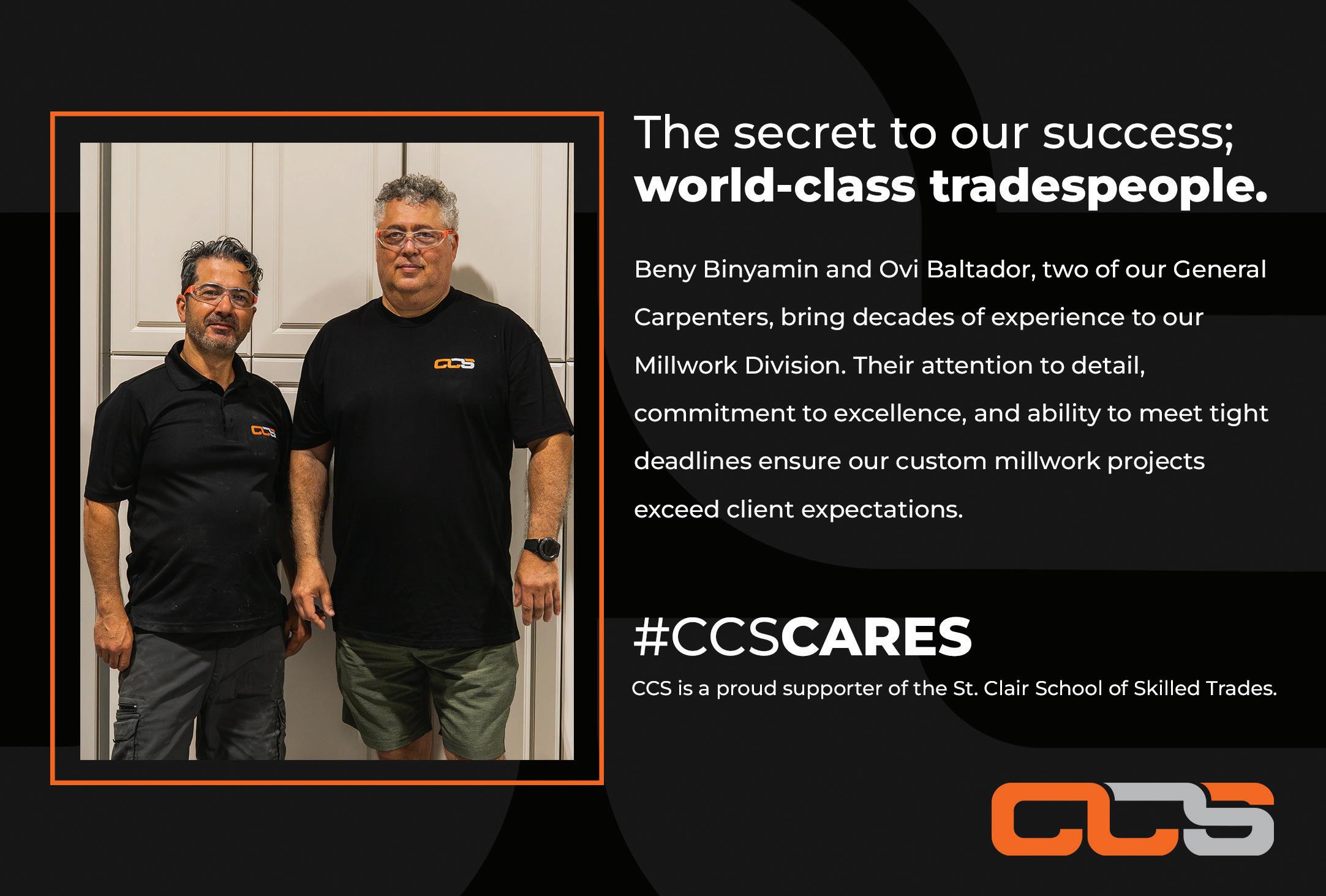
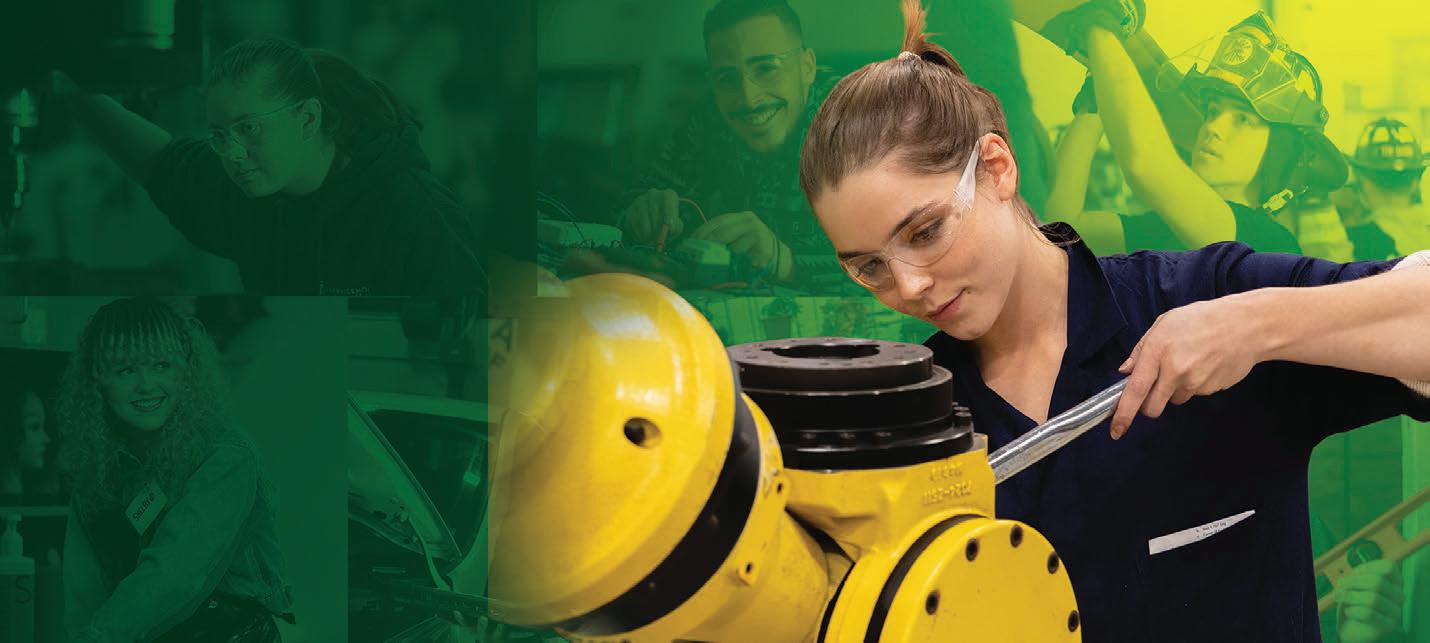
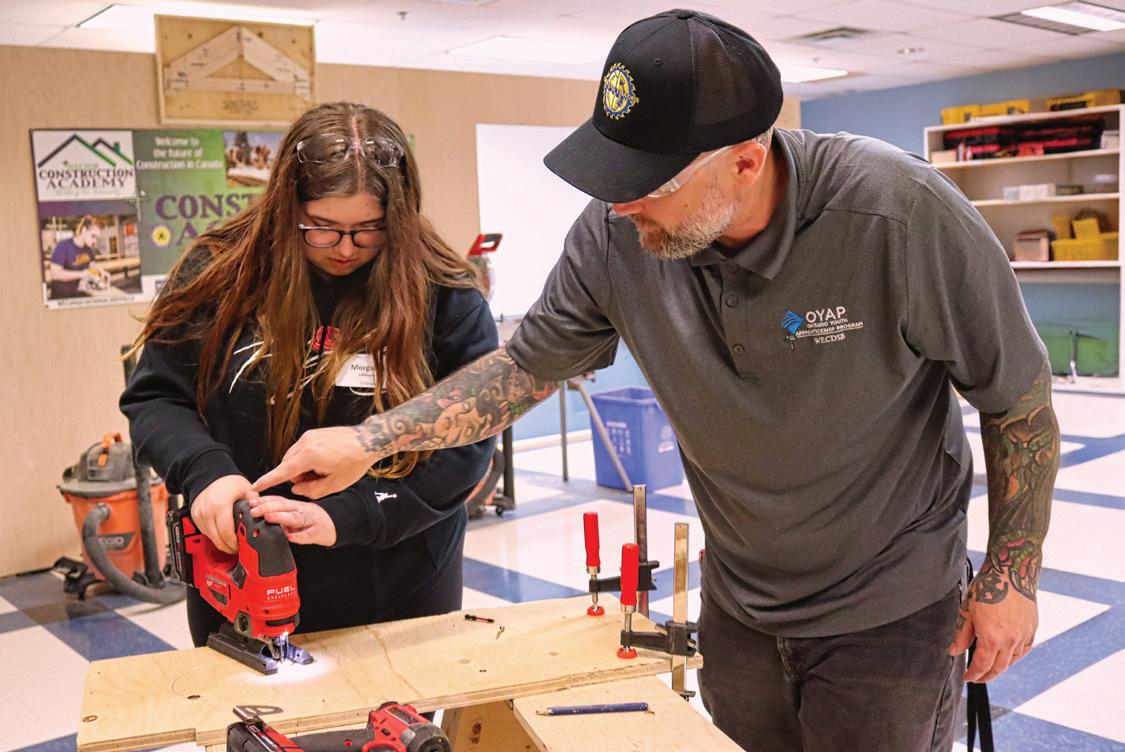


flowed throughout our city—with an emphasis on the flowing.
“Some of the main construction trades— such as electrical engineering and plumbing—are through the roof,” Lido states. “We are at max capacity right now.”
Much like the Construction Academy, St. Clair College’s School of Skilled Trades is designed to replicate actual days on the jobsite.
“ We aim to provide our students with conditions that would mimic true industry,” Lido explains. “When you walk into the Electrical-Residential Lab, it looks like a residential home. Our lecture component is only 50%. Our labs are designed to replicate the trade as closely as possible. When you transition into the industry, you know exactly what to expect.”
As with the Construction Academy, many St. Clair graduates are offered high-paying jobs shortly after obtaining their diploma.
“ We have many professionals come in and speak to the class,” Lido explains. “And many of our students are scoped out by prospective employers before they even graduate.”
And when it comes to addressing any potential students, Lido takes care to remind us that while there are no straight roads in life, you can still reach a desired destination if you only keep moving.
“If you choose electrical or you choose plumbing, there’s so many transferable skills you can learn,” Lido reminds us. “You may later decide that one of those industries aren’t for you. But you haven’t lost anything. You can take what you’ve learned and carry them forward. You may have to take another program for two years—but when you zoom out, that’s a very short span of time. You don’t know where life is going to take you. You might even end up using the skills from both!”
One of the many local companies who recognizes the importance of investing in the future of local tradespeople is CCS. For many years, they have been contributing to the program at St. Clair College. “The tradespeople on our team are vital to the success of our projects and clients—their commitment to excellence is unmatched. It’s a privilege to support the future of the trades in our region,” says Carl Bernat, President of CCS Group of Companies.
“ We have so many success stories,” Cory states. “I have former students in their early twenties who are writing their Red Seal exams—and the average age for an apprentice in Ontario is 27! We are so proud of all of them. Our city is in good hands.”



A


The Community of Brittany’s Gate affords you this rare opportunity to be one of the few homeowners to acquire only one of the “18” secluded luxury home’s available only to the residents of “Brittany’s Gate”. Your home will be nestled among other discerning homeowners who also seek a “Community of Quite Elegance” while still being only minutes away from the needed amenities of life.
If this lifestyle beckons to you and your dreams please contact us for further information and your opportunity to be a resident in the Community of Brittany’s Gate. 1000 Alma Street, Amherstburg 519-736-1892 norbuilt.com








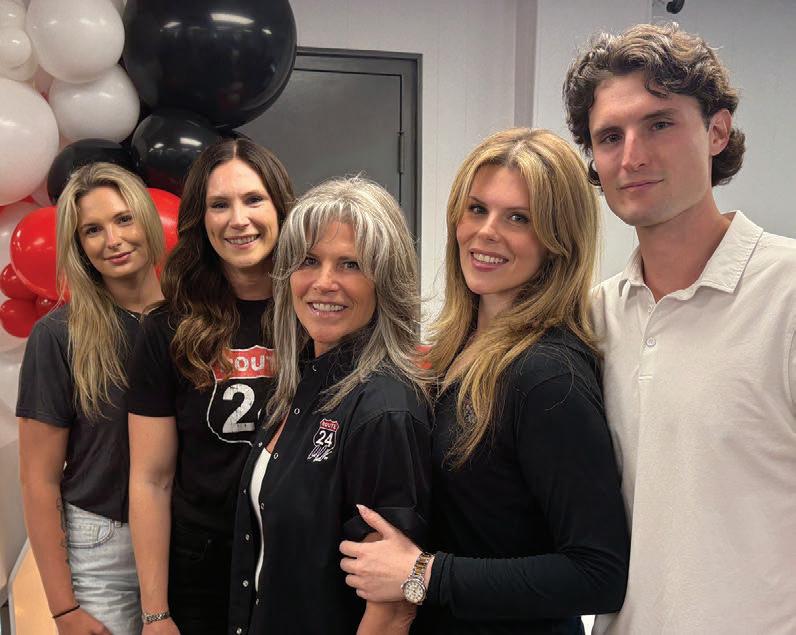
Hôtel-Dieu Grace Healthcare (HDGH) recently celebrated the ribbon cutting of the new Bob Probert Tecumseh Campus. Located at 12420 Lanoue St. in Tecumseh, the facility offers Cardiac Wellness, Outpatient Rehab, Speech-Language therapy, and Geriatric Assessment Programs, bringing care closer to home for the residents of Tecumseh and Lakeshore. The establishment of the Bob Probert Tecumseh Campus was made possible by the tireless efforts of donors to our HDGH Foundation, the Probert Family in particular who were instrumental in raising $1.2 million for the Foundation through 10 Bob Probert Rides, Probert Classics, and Motorcycle Raffles. Members of the Probert family attending were Declyn, Brogan, Dani, Tierney and Jack. hdgh.org/foundation

Take Your Shot is an entrepreneurial business and scholarship competition for youth ages 17-29 offered by The Bridge Youth Resource Centre based out of Leamington. The program gives away over $95,000 annually to local youth throughout Windsor-Essex and Chatham-Kent. Pictured here are this year’s business winners with Alchemist Athletics taking home top prize of $20,000, (from left) Muna Fadel, Suleiman Daniel, Abdiel Lara, Nicole Cosme and David Mailloux. thebridgeyouth.ca

The House of Sophrosyne, a safe place for women to recover from substance abuse, is pleased to announce the new sign recognizing Lisa Tayfour for her prior donation and naming rights to the House of Sophrosyne’s “Residential Treatment Facility – RTF”. This sign will be permanently displayed near the entrance to the in-house services at 5305 Adstoll Ave. in Windsor. Sophrosyne.ca

Brentwood Recovery Home is excited to announce the appointment of Dr. Sonja Grbevski as its new Executive Director. With over 25 years of extensive experience in leadership roles, Sonja brings a wealth of knowledge and a proven track record in mental health and addictions. brentwoodrecovery.com
After a hard-fought battle that lasted at least 90 seconds, Nash Fowler took home the gold in the St. Clair Beach Optimist Club Fishing Derby. The annual event, held in Lakewood Park in June, was the seven-year-old’s first competition and could well be the beginning of an illustrious career. Congratulations, Nash on your trophy for “Smallest Fish Caught”. The first win is always the best.


Ten years ago, Brandon Podhy, owner of Kerb Krew Landscaping began assembling a group of individuals with the intent of making properties more beautiful. The group have been trained in not only landscaping but the construction of concrete curbing around garden areas, flowerbeds and trees. They will instantly transform outdoor spaces into beautiful, functional and easy maintenance show pieces. Reach Brandon at 226-935-8595 or visit kerbkrew.com.

The board of directors for both Tourism Windsor Essex Pelee Island and Invest WindsorEssex have announced the appointment of Gordon Orr, Chief Executive Officer of Tourism Windsor Essex Pelee Island as Chief Executive Officer of Invest WindsorEssex. The appointment as a dual CEO was unanimously approved by the board of directors for both organizations. Orr will act to provide excellent executive leadership to both regional entities, while leading a strong team with senior leaders Jason Toner, Vice President of Marketing and Communications at Tourism Windsor Essex Pelee Island and Joe Goncalves, Vice-President of Investment Attraction and Strategic Initiatives at Invest WindsorEssex. tourismwindsoressex.com or investwindsoressex.com

Now open at 5421 Wyandotte St. E., Dufour Dental Hygiene is proud to be Windsor’s first independent dental hygiene clinic. Krista Dufour and her team are now welcoming new patients! As a registered provider for the Canada Dental Care Plan, the clinic is committed to making preventive oral care more accessible for everyone. They also offer mobile dental hygiene services to long-term care homes and provide in-home visits for clients with mobility challenges. You can keep your dentist and still choose an independent dental hygienist for your cleanings and preventive care. dufourdentalhygiene.ca
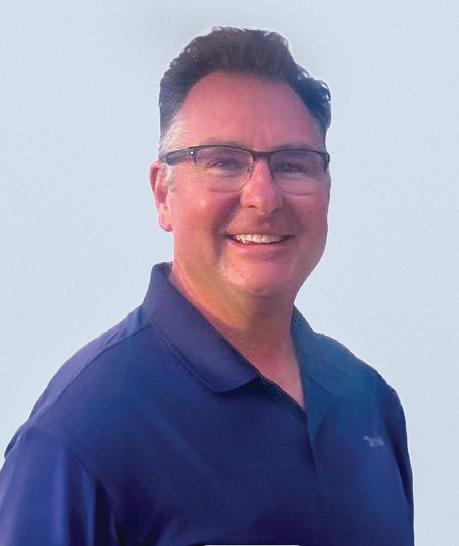
Craig Evans is a seasoned professional with over 15 years of experience serving Windsor, Essex, and Kent counties. A distinguished graduate of Conestoga College in 2009, he has built a reputation for excellence in his field and compassion for his clients. Craig welcomes clients to their new locations in Tecumseh and Windsor. hearontario.ca

STORY BY MICHAEL SEGUIN
“I DON’T DRINK OR DO DRUGS,” Josh Indig states. “Because I don’t have to.”
If you’re even tangentially involved in Windsor’s passionate racing community, you’ve likely heard of Josh Indig. At only 27, he’s distinguished himself on the track countless times over.
And—like almost all athletes and performers—Josh can still remember his first time behind the wheel. When he was only five, his father assembled some parts together to make a go-kart. But despite being a fan of the sport, young Josh did not immediately take to racing like a fish to water. He still recalls how during his first “race,” his father ended up pushing the three-hundred-pound chassis around the abandoned parking lot because he was too scared to press on the gas pedal.
(“I don’t think this kid is cut out for racing,” he later confided to Josh’s mother.)
But Josh did eventually discover the accelerator. And how he accelerated! Before long, he was leaving bluish clouds of smoke and black marks on the concrete behind him. Josh’s father obliged by constantly changing the restrictor plate— allowing his son more and more throttle.
That said, his first competitive race did not exactly go according to plan.
“I can still remember drifting into the first corner after we went green,” Josh admits. “And I still remember how everyone else just zoomed past me—even though I thought I was going just as fast as them! I was in awe. It looked like they were defying physics. I thought to myself: ‘What am I doing? I thought this was supposed to be easy?’”
A lot of people would have been discouraged after being so humbled. But perhaps what is most remarkable about Josh is not his innate talent—but how completely he set about fortifying his skills.
“Month-by-month, week-by-week, you just start chipping away,” Josh explains. “You start gaining seconds. Then a few tenths of a second. And when you get near the front you’re fighting for hundredths of a second. With experience, those hundredths feel like an eternity as a driver once you’re dialed in.”
Josh highlights how—as with any new sport or new pursuit—the more time spent in the seat allows for a broader depth of focus.
“ When you first start racing, you’re only worrying about rudimentary skills,” Josh states. “You just want to stay on the track. And you’re desperately trying not to hit anyone or anything—because that will really hurt and cost you a lot of money! But as you get acclimatized, those basic skills become second nature. You stop focusing on the inputs and start to consider other elements. ‘Okay, so this track is darkening up in this spot, so maybe I’ll put my tires there because that will have more grip. Or this part of the track is in shade and cooler, so I’ll try and place my right-side tires there.’”
But when asked about the most important learning curve he had to navigate, Josh steers the conversation outside of the track.
“Racing is different from any other sport,” Josh states. “There’s no set path or draft to make it to the big-leagues. It’s not like you can play for your local school’s team, then go to varsity, and then get scouted to a college for racing. There’s no coach or talent scouting—you have to mentor yourself. And
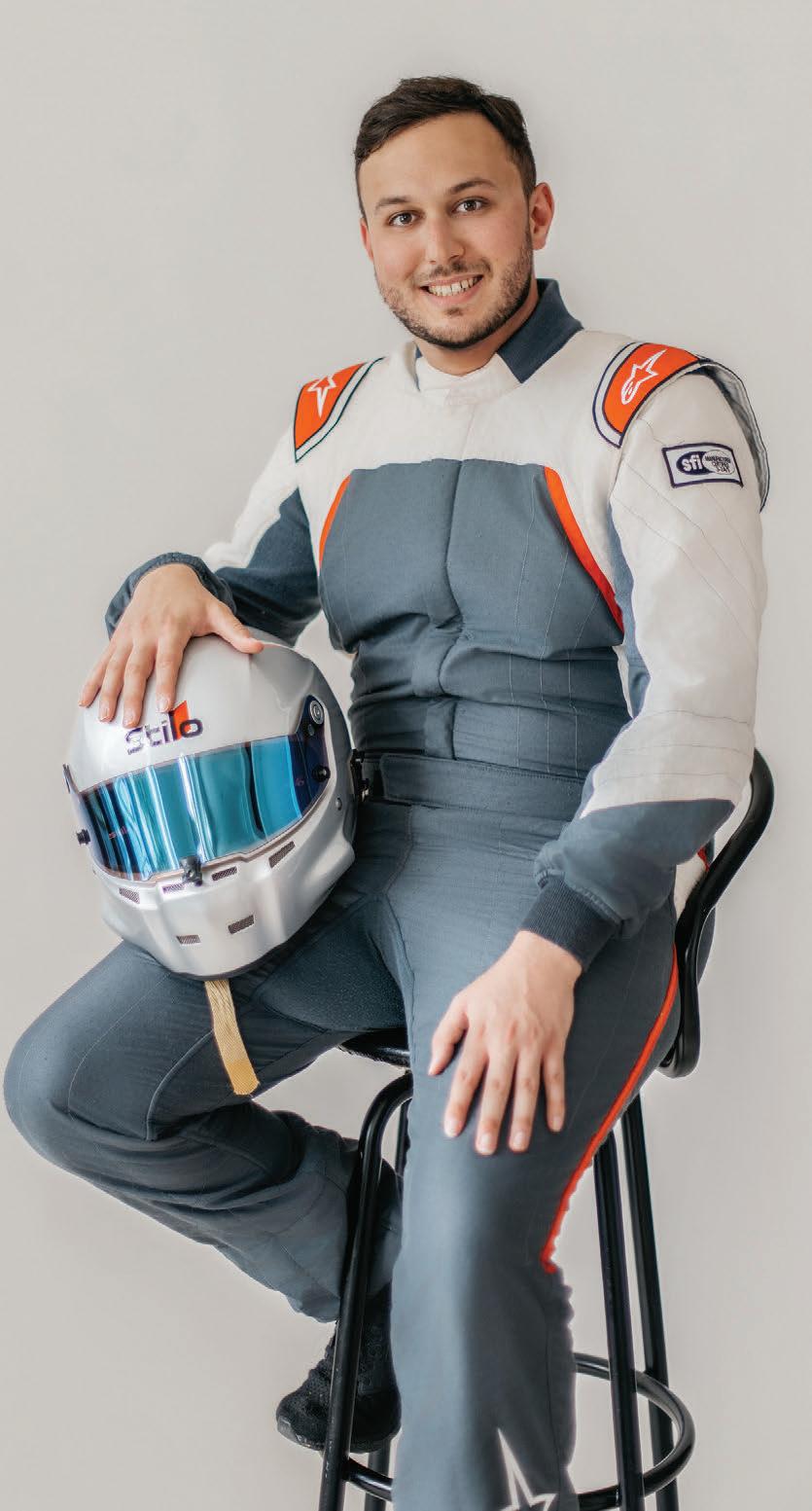
most importantly, you have to market yourself. You can win all the races in the world—and no one would care. No one would know! So strangely enough, racing is the easy part. You still have to find a way to meet the right people. You still have to find a way to market yourself and force eyes on you.”
And while Josh had competed dozens of times, there is one race in particular that still causes his lips to lift into a smile.
“I’ll never forget my first-ever win,” Josh explains. “I didn’t win any race during my first year in go-karts. We had a bunch of really old hand-me-downs. But once my dad realized how dedicated I was to the sport, he started investing in better equipment.”
And this particular race in question contained another ingredient. s









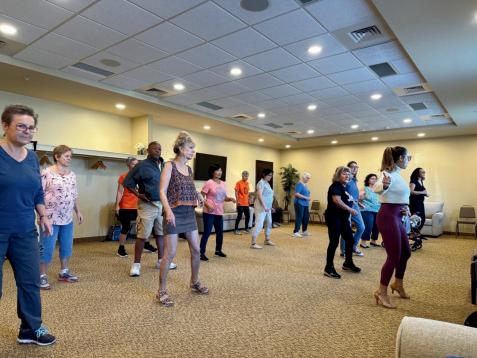









Josh’s older sister Shanna came down from Toronto to watch him compete.
“It was her first time at the track supporting me,” Josh states. “I was only a few milliseconds behind first place. For all the qualifying races, we were neck-and-neck together. And Shanna didn’t know anything about racing, but she still gave me a game plan. She gave me a hug and wished me luck.”
It then started raining shortly before the final bout. Josh and his team had to hurry to place different tires on the kart.
“The skies just opened up,” Josh recalls. “People were sliding all over the track and spinning out. It was absolute chaos. But I still remember sliding into the victory lane. My sister was waiting for me there in tears.”
And the memor y has special significance for Josh. Unfortunately, Shanna passed away in March of 2022. But despite this tragedy, Josh and his family continue to keep her spirit alive.
“Ever since she passed, I have a special sticker on every car I race for her,” Josh states. “Right next to my name.”



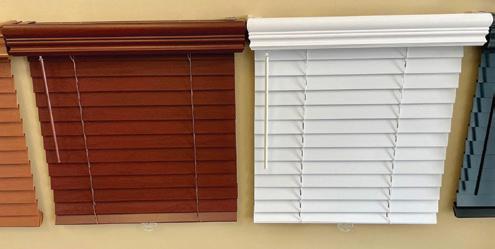













And thanks to his obvious success on the track, Josh has leveraged his skills into a career in racing. After graduating from the University of Windsor’s Mechanical Engineering program, he spent some time as a Ride & Handling Performance Engineer at Stellantis. He is now currently based in Concord, North Carolina, where he’s working in the simulation department at GM Motorsports. He now spends his time helping train the top drivers of NASCAR, IndyCar and Formula One.
And much like his revelation about marketing, his time at GM Motorsports is only bringing him closer to his ultimate goal: racing professionally.
“I’m never going to stop driving,” Josh explains. “But I’m taking a bit of a sabbatical from the track to learn more about the engineering behind motorsports. As racing has progressed technologically, driving and engineering have become increasingly connected—more cross-functional. That’s the whole purpose of the GM Charlotte Technical Center I’m working in. Engineers work alongside drivers daily during the week to maximize their performance at the track on the weekends. As soon as I saw the tech center was being built, I knew I had to work there. It combines the best of my both worlds, racing and engineering.”
So, for racing and non-racing fans alike, Josh Indig is someone to keep an eye on. Just don’t expect to find him at a bar.

STORY BY MATTHEW ST. AMAND / PHOTOGRAPHY BY TYLER MIDDLEBROOK
MUSIC IS A MYSTERIOUS MYSTICAL language that is singularly human. The instruments upon which music is created are often finely made objects of exacting craftsmanship: pipe organs, wind instruments, guitars, pianos, to name but a few. The hurdy-gurdy is an instrument of particular sophistication and intricacy that was first made in medieval times. Contrary to what many might believe, the oldest musical instru ment in the world is not a drum, but a flute made from the bone of a bird that has been carbon dated to be more than 60,000 years old—created by Neanderthals, no less.
Chatham resident, Noel Marentette, has been a musician for sixty years. In recent years, he has taken to creating “upcycled environmentally friendly” mu sical instruments out of materials he finds while on walks.
“I play guitar, banjo, lap steel slide, mandolin and mountain dulcimer,” Noel says. “I started playing when I was fourteen years old. My uncle had a ga rage band, and he showed me how to play the guitar. I don’t read music.”
Noel has always made a point of sharing his love of music, particularly the guitar.
“ Whenever I see a playable, old guitar in a second-hand shop, I usually buy it, clean it up and restring it,” Noel explains. “One time, I found a cheap, playable parlour guitar at a thrift shop.






As I stood in line to pay for it, I noticed a mom and her son behind me, and the little boy was really eying the guitar. After paying for it, I paused at the exit and when the mom and her son came through, I gave the guitar to the boy. He lit right up and ran to the car with it!”
Beyond the guitar, Noel says that he has always had an interest in vintage stringed instruments from different parts of the world. At one point, about a dozen years ago, he decided to try his hand at creating a playable stringed instrument.
“I got inspiration from watching some videos online, people making ‘canjos’ and other homemade instruments constructed of found materials,” Noel says. “And I thought to myself: ‘Jeez, maybe I can make some stuff on my own.’”
A canjo is a stringed instrument that makes use of a can for the body, a length of wood as its neck, plus at least one string. Noel continues: “I’m not a wood worker. My first canjo was a ‘trial and error’ project. Not many people make this kind of stuff.”
gourd (hard vegetable) for the body, hollowed it out and stretched a piece of goat skin over the sound hole.
“The instrument is fretless,” Noel says. “You have to navigate for the notes, use hammer-ons, pull-offs or a slide.”
He explains that gourd-body stringed instruments go back decades in the Ozarks.
One morning, Noel was out in his car looking for some “treasures” to inspire a new instrument. This outing did not leave him disappointed. He found a single, stray crutch in his travels.
“Ironically, I found it in the same neighbourhood where I’d lived sixty years ago!” Noel recalls. “I stopped and picked it up and immediately saw the possibilities of what this old crutch could be transformed into.”
When he got it home, Noel wasted no time transforming the crutch into a sixstring slide guitar with an electric pick-up, so it can be amplified. It was featured in the “Our Canada” column in Readers’ Digest Canada.










Among the first projects Noel undertook, he commemorated Canada’s 150th birthday, in 2017, by constructing a box guitar using a 1962 Ontario license plate for its face, which fronted a small body comprised of a wooden box. Noel hand-whittled the instrument’s tuning pegs and used bolts for its nut and bridge. The tools he used were few, but included a hand-crank drill to make holes, and a steak knife to carve out slots in the headstock.
On the instrument’s body, Noel inscribed four things he felt best represented Canada: Vimy Ridge, Terry Fox, hockey and Canadian whisky. Best of all, the instrument can be tuned and played.
Enjoying the challenge of creating such instruments, he went on to create a Paw Patrol-themed canjo for a four-year-old family member.


It is the process of creation that motivates Noel. He tends to give away these instruments as gifts to friends—or people who simply love music—so there is unfortunately no trove of instruments for the public to view.
He estimates he has created approximately one hundred instruments, some going to locales as far away as Nova Scotia, the Philippines and India, in the hands of friends and admirers.
“I create these instruments for the challenge,” Noel says. “I don’t do it to outdo anyone or to prove anything. It’s the challenge of taking different things, cleaning them up, straightening them out, piecing them together and then hearing the sound they make when I am done. The response I have gotten from people is overwhelming.”


“ When he got it,” Noel says, recalling the young family member’s initial reaction to the gift, “he was grinning. That is priceless.”
Where does Noel find the materials he uses for creating his instruments?
“ When fabricating my canjos, my motto is: ‘Use what you got,’” he says. “I will be out on a walk and see a vintage box, or anything else that looks usable and interesting. I go for walks in different places; around where factories used to be or old transport parks. I find all kinds of unexpected items. I stay away from plastic.”
After that project, Noel turned his hand to crafting a handmade banjo. He used a
He adds with a laugh: “The craft itself is like trying to make a silk purse out of a sow’s ear!”
In recent years, Noel has created fewer and fewer instruments. He also does not play music all that often, anymore.
“Arthritis is creeping in,” he says. But he does fondly remember the many instruments he has created in the past dozen years and reflects upon all the pleasure they have brought to the people who received one as a gift, or who had simply heard the strange, beautiful music they make.
To learn more about his instruments, Noel can be contacted at noelmarentette@ hotmail.com.

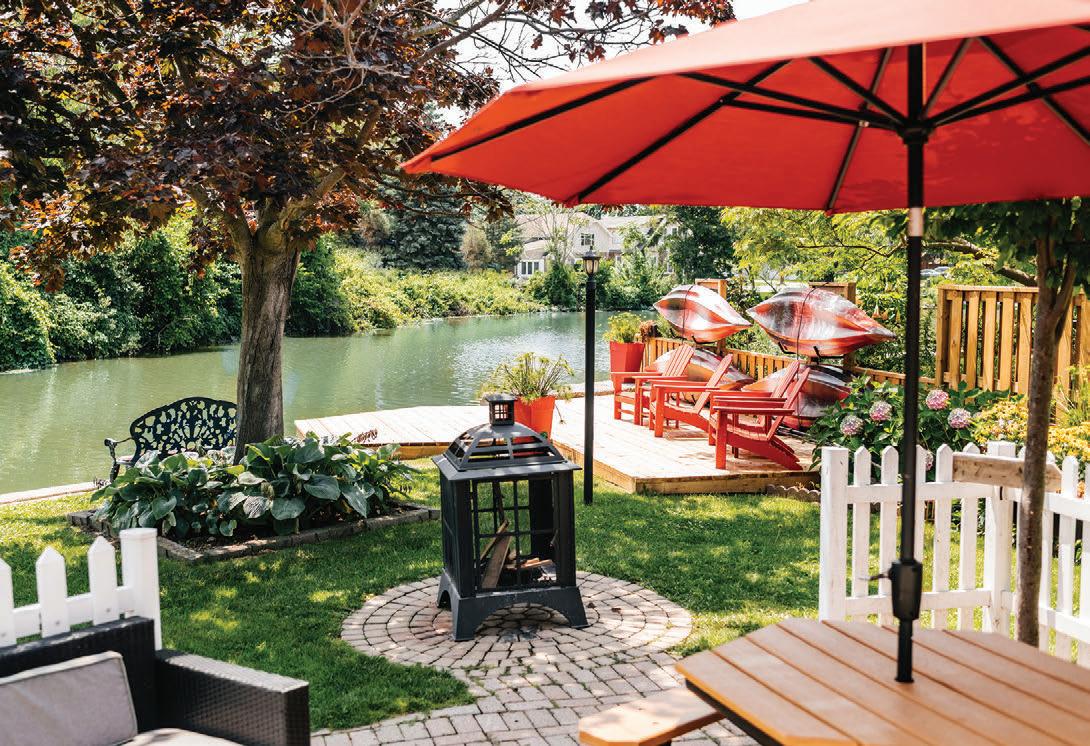
JEREMY WINTER and his business partner Chris Whalen have worked in construction for almost 30 years each.
As such, they know a prime location when they see one.
“A friend of my wife and I’s originally owned the house for a handful of years, and when he moved in with his spouse, he told us the place was going on the market,” Jeremy recalls. “We mulled it over for a while, but we saw the potential there. We knew it could be turned into the perfect vacation home.”
Shortly thereafter, work on what would eventually become the year-round getaway commenced.
And now, two years later, the Cedar House stands tall as one of Windsor and Essex County’s most beautiful vacation spots!
“The Cedar House has been fully operational for some time now,” Jeremy explains. “We’ve had a lot of great people come by. And a lot of repeat guests! We’re excited for more people to see what the Cedar House and surrounding area has to offer.”
And the Cedar House does have quite a lot to offer! Located in the shimmering hills of Essex County—near Kingsville on Cedar Creek—the vacation home is close to all kinds of amenities. The home is walking distance from the picturesque Cedar Beach, and just a few kilometers away from over a dozen wineries and restaurants. As well, the Cedar House is only a few minutes’ drive from the Cedar Island Yacht Club.
Whatever your pleasure—be it fishing, golf, kayaking (provided) or boating—the Cedar House is near all your favourite activities. With Point Pelee and all it has to offer not far away either.
The Cedar House is available all year round. The home is fully equipped with all modern comforts, regardless of the season.
“It’s not a summertime getaway – it’s an anytime getaway!” Jeremy stresses. “We have air conditioning, a gas and fire stove, a fireplace—everything! It’s not a cottage. There’s always something to do close by. In the winter there’s ice fishing. As well, during the winter

months the wineries are still active and Point Pelee is still open and close by.”
The Cedar House has already made a considerable impression on everyone who passes through its welcoming doors.
“People are always blown away by the home,” Jeremy states. “They often leave comments with people saying things like: ‘This place is even better than what the images show!’”
The Cedar House is perfect for all kinds of visitors, whether family or friends.
“In terms of visitors, the Cedar House is split 30%-30%-30%,” Jeremy explains.

“We get a lot of fishing groups coming through. We get a lot of couples with young children. And because we have over 17 wineries at our fingertips, we get a lot of women’s getaways. But the Cedar House is perfect for anyone.”
Interested in spending some time at the Cedar House? Reservations can be made at thecedarhouse.ca or on Vrbo.
“The easiest way is probably to book on Vrbo,” Jeremy states. “All the fees are built-in. But you can also book directly through the website. Regardless of whichever option you choose, the prices are all the same. We hope you visit us soon!”

DRUMMER MIKE COOPER didn’t realize he wanted to form a band until he worked the bar at his family’s tavern one night, and heard a guy sing. It was just another karaoke night and Mike was used to drowning out the auditory assaults on popular music. He was twenty-eight years old and had recently left a successful career in amateur baseball—five national championships—when Jerry LeBlanc took the stage.
“The moment I heard this guy sing,” Mike remembers, “I thought: ‘Holy cow! He’s got an unbelievable voice! This might be something we could put together.’”
STORY BY MATTHEW ST. AMAND
PHOTOGRAPHY BY GENE
SCHILLING
From his earliest years, Mike’s life was guided by two passions: baseball and drumming.
“I started with drum lessons when I was eight years old,” he explains.
At age eleven, he began playing baseball, coached by the venerable Father Cullen of Assumption high school.
The following year, Mike’s mother passed away at age forty-two. Everyone deals with grief differently and Mike’s father and older brother dealt with theirs working at the family tavern.
“They weren’t home much,” Mike recalls, “and the drums were
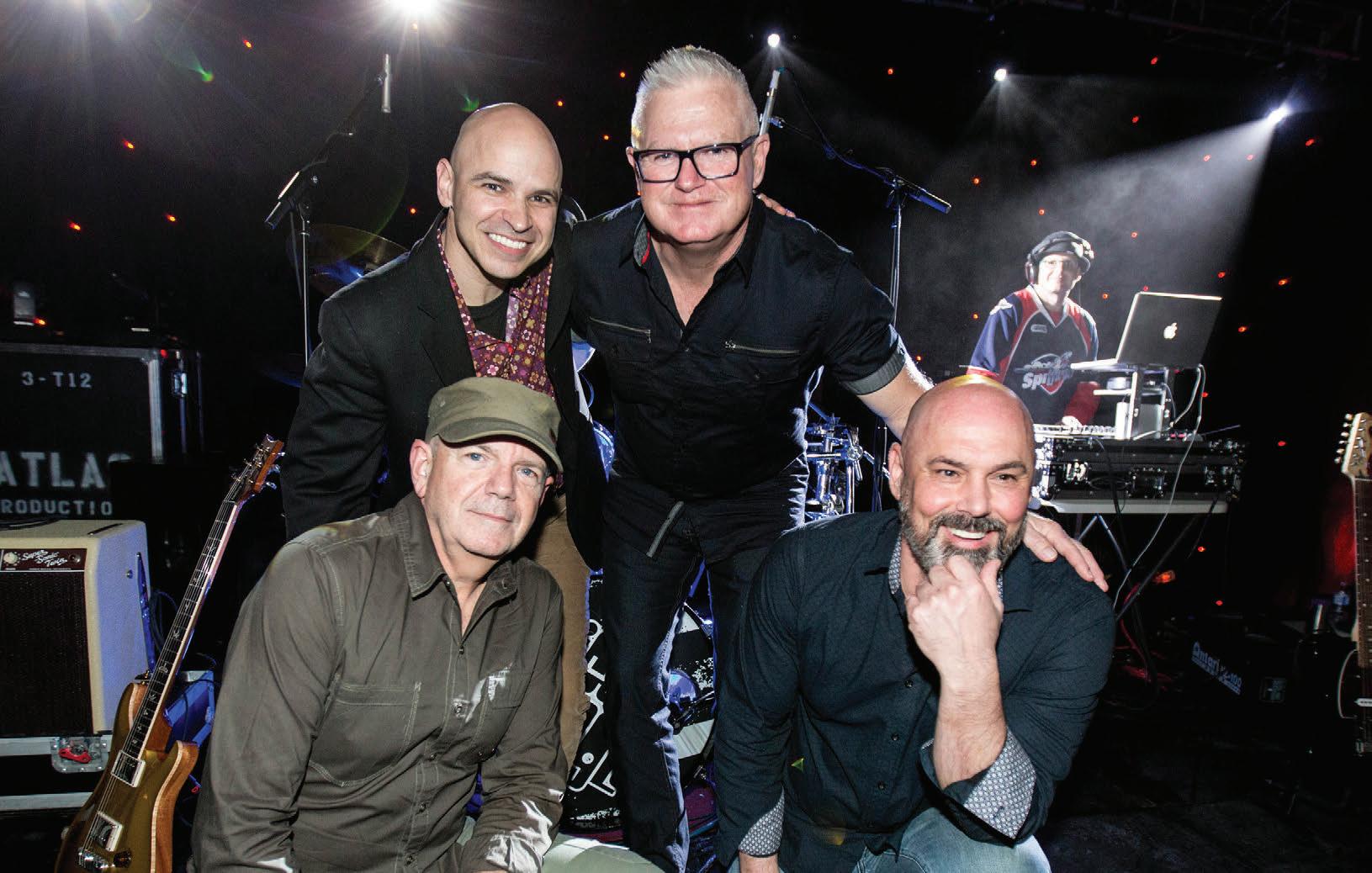

my babysitter. After coming home from school each day, I’d watch TV for a while, then play the drums. I’d go back and forth like that until about midnight. I’ve always had a passion for the drums.”
When baseball entered his life, there was time for little else.
“I was too busy to get involved in a band,” he continues. “I dabbled with a wedding band when I could make it from baseball, but it didn’t really go anywhere.”
Then he heard Jerry LeBlanc sing.
“I approached Jerry,” Mike says. “He had a very soulful voice. He was a natural entertainer. We put together a three-piece band with a keyboard player.”
The keyboardist left after about a year. Mike felt passionate enough about the band to search for a replacement.
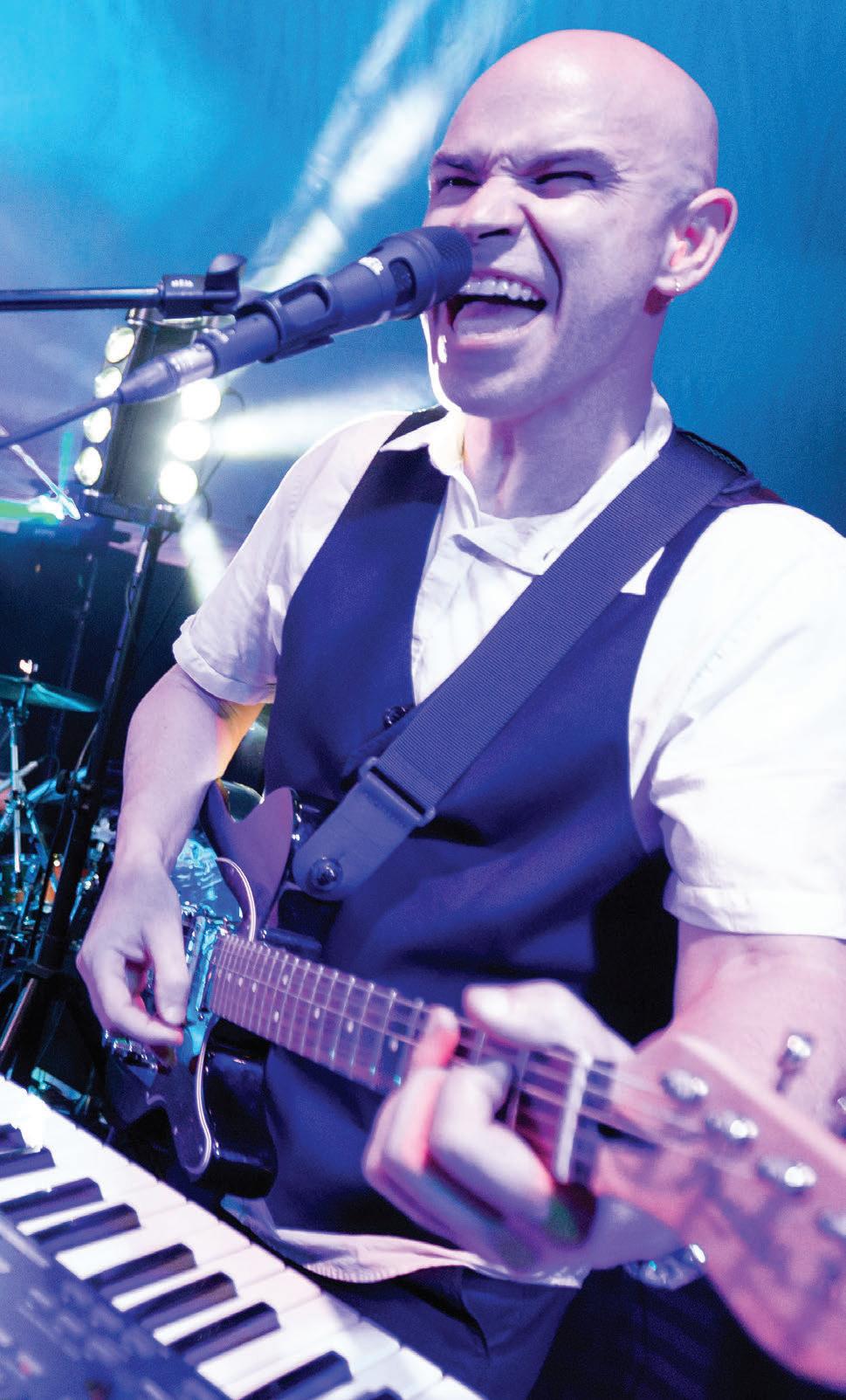


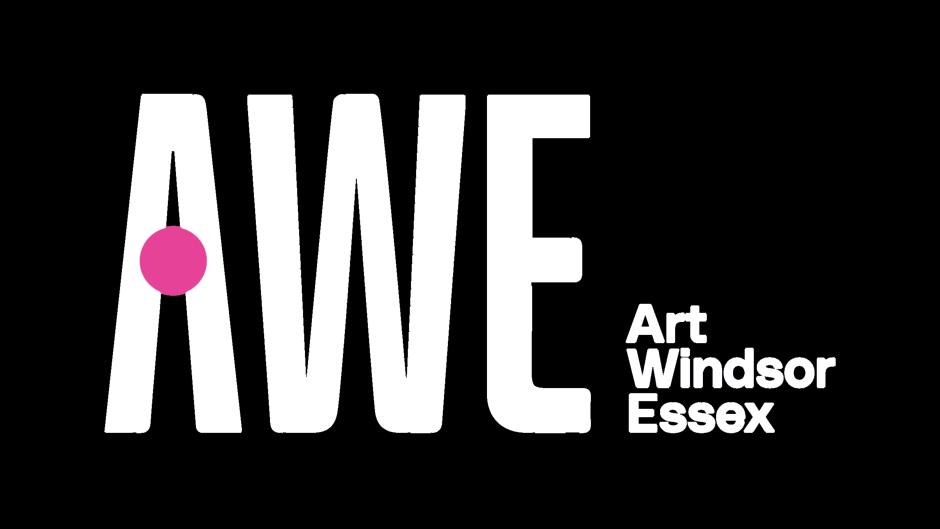





tunate enough to meet Dave Labute,” Mike says. “Dave was a teacher who played keyboards and guitar. He was interested in joining, but told me, ‘I don’t think I can do it. I’m getting married in a
, however, Mike heard a segment on AM800 where callers spoke about people who had a positive impact on their
ne caller shared how much an old teacher, Dave Labute, had impacted his life,” Mike recalls. “And I thought: ‘This has
t was. Mike called Dave again and Dave
e has been my best friend for over thirty years,” Mike says. “Dave has been our Wall of Sound. He is a great musical director and he does an amazing job arranging as well as performing the songs. He has been
, Jerry, left the band on good terms after twenty-five years. Although he could never be replaced, talented singer/guitarist, Luc Micheau, joined the
uc’s in his thirties, the youngest band member,” Dave says. “He’s been a very welcome addition, bringing his era of music— the 1990s—to our catalogue.”
Rounding out the line-up is John J.D. Drew, lead guitarist who also provides vocals.
“John has been with us for twenty years,” Mike says. “He’s in the Windsor Music Hall of Fame.”
Bigg Wiggle Band based its name on its central purpose: to see its audience “wiggling” (dancing) on the dancefloor wherever they play.
“Our motto has always been: ‘A little something for everybody,’” Mike says.
Over thirty-three years, Bigg Wiggle Band has developed an incredibly diverse and wide-ranging repertoire.
“Throughout our career we have performed about five hundred songs,” Mike continues. “The genres we play include dance, old school R&B, funk, rock, classic rock, pop, retro—old 80’s stuff—and country music.”
When a band performs onstage, it often appears to any audience like effortless fun. Many times, it is.
“ What audiences don’t see, though, is all the work that happens behind the scenes,” Mike explains. “To learn a song, to get it right, takes a lot of work. We work on a song, give it two or three tries playing it live
to see if it works or not. Sometimes, our take on it is a dud, but we still put all of that work in. That’s just how it goes.”
Bigg Wiggle Band’s first big break came in their early years when they were invited to perform during the Challenge Cup at St. Clair College.
“There were about two thousand people there, partying their butts off,” Mike remembers. “A lot of people saw us and we got a lot of jobs through that—weddings, festivals, corporate gigs from here to Toronto. I haven’t called anyone for a job in over twenty years. In the past ten years, we have played between ninety and a hundred shows a year.”
Mike says that festivals are the most fun. They have played the Essex Fest fourteen times, ten years playing at the Tecumseh Corn Festival and the Taste of Tecumseh Festival since its inception. The festival that is closest to the band, though, is WiggleFest.
“ We wanted to give back to the community,” Mike says, “so we created WiggleFest. This is our fifteenth year. We keep things simple: good music, BBQ, adult beverages. We’ve raised more than $150,000 which has benefited the Special Olympics, Family Respite, Mayor’s Youth Leadership, Farrow Miracle Park, FINA, Rotary Club and the Kinsmen Club.”
As the old saying goes: All good things must come to an end.
Bigg Wiggle Band has decided that 2025 is their last year of performing.
“ We’re bringing it to an end because what is there left to do?” Mike says. He pauses before adding: “I have mixed emotions like you can’t believe. When it actually happens, though, I’ll finally be able to spend a weekend with my wife, Aline. I will retire the Bigg Wiggle name and enjoy thirty years of great memories!”
He continues: “We want to thank our audience, everyone who hired us for their weddings, festivals and corporate events, everyone who came out to support us. And much respect to our roadies over the years, particularly Rachel Hammond who was with us for ten years.”
Bigg Wiggle Band’s final show will be on New Year’s Eve at the St. Clair College Centre for the Arts.
To learn more about the band, and for further details about WiggleFest 2025— which happens this year on September 20, at Colchester Harbour—and information about its final show, check out Bigg Wiggle Band’s Facebook page www.facebook.com/ biggwiggleband/. WLM
STORY BY PAULA JUST PHOTOGRAPHY BY KELSEY SCHUMACHER AND GABRIELA DIGESU
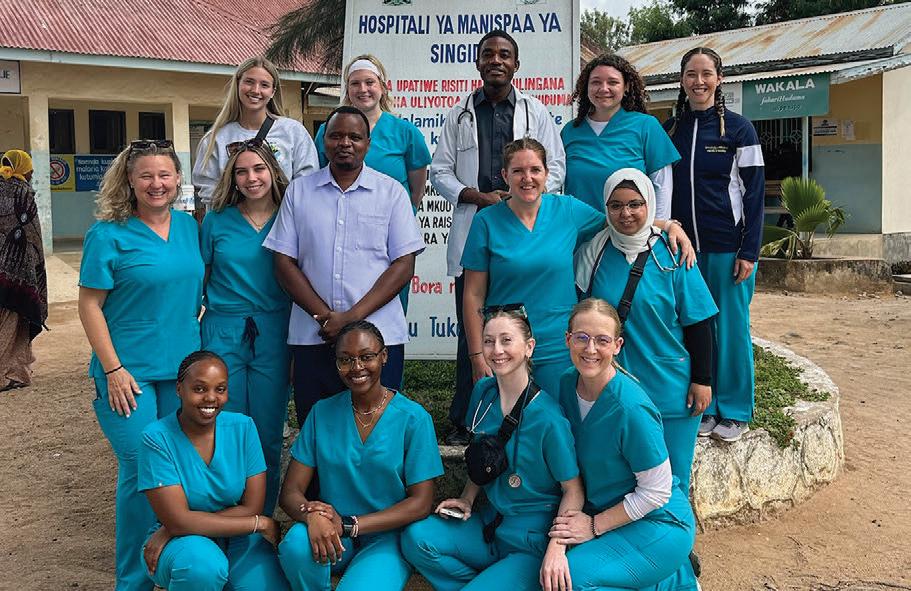
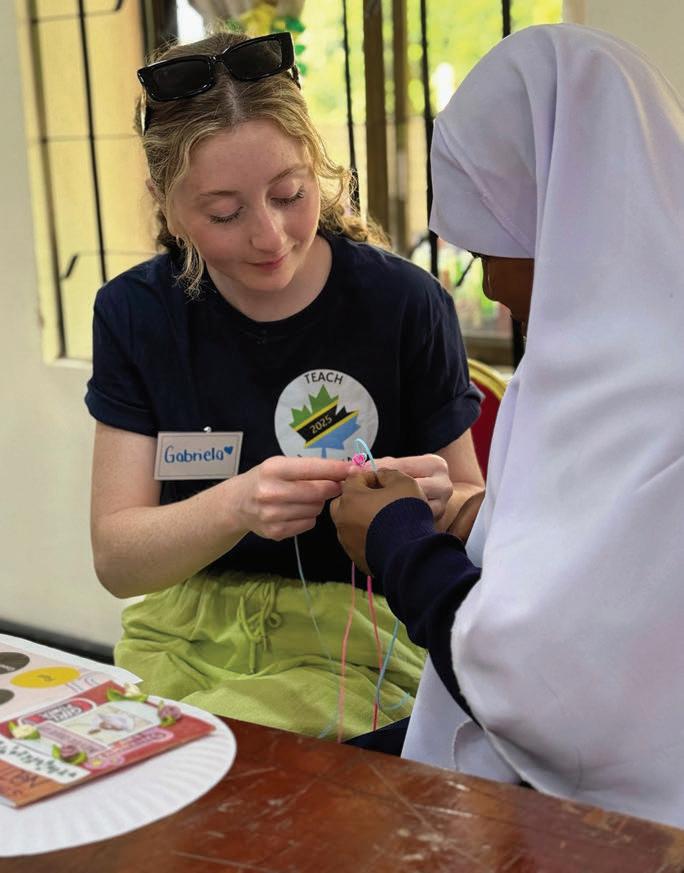
WHAT DOES IT MEAN TO CARE for others truly? For a group of nursing students from the University of Windsor, the answer came not only from textbooks and classes but from three intense weeks spent thousands of miles away from home in the heart of Tanzania. There, amidst breathtaking landscapes and rich cultural traditions, they confronted the harsh realities of global health inequities, providing care with limited resources, sharing knowledge and learning powerful lessons in resilience and human connection.
The journey was made possible thanks to the Teach Tanzania program, coordinated by Dr. Clinton Beckford, Vice President of People, Equity and Inclusion; and Professors Rachel Elliott and Heather Sweet from the Faculty of Nursing at the University of Windsor. This was the first time nursing students participated in the initiative.
“It was a huge commitment,” said Rachel Elliott, who teaches the undergraduate Global Health Nursing course. “The clinical lead, Natalie Bownes and I conducted interviews and selected ten people. The team was so perfect. Now, I can really see how our talents, abilities and gifts blended to make such a beautiful and supportive team.” Along with Rachel’s students, Faculty of Education students and University professors joined the trip, resulting in a group of 34 people.
The Teach Tanzania team held several fundraising events, including book sales, spinning classes, workout marathons, trivia nights and a golf tournament. The funds raised—over $27,000—were used for initiatives in Tanzania. To achieve all this, the expedition also received support and donations from various institutions, including Windsor Regional Hospital, Windsor-Essex County Health Unit, Travel Health Windsor, NovaMed Diagnostics Inc., the Windsor Essex chapter of the Registered Nurses’s Association of Ontario, Ontario Nurses’ Association
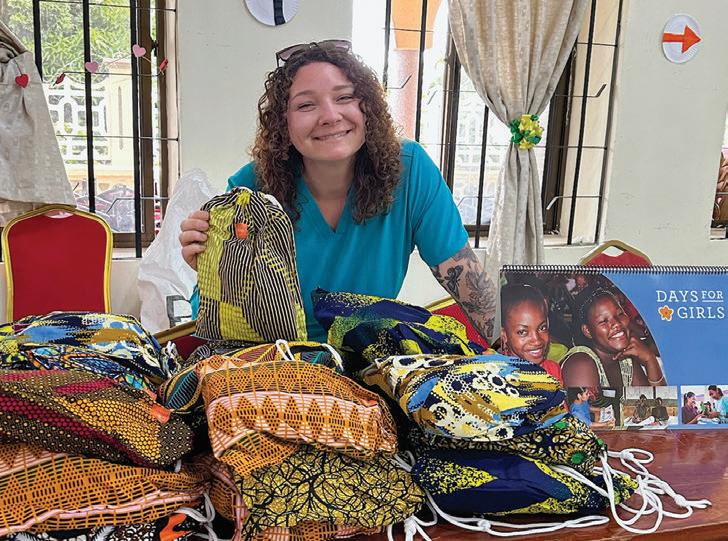

the Girls Leadership and Empowerment Camp; Kelsey Schumacher poses with the donated Days for Girls kits, which will supply girls in Tanzania with menstruation products to reduce period poverty and keep them in school.


Local 008, Club Pilates Tecumseh, Parkway Dental, Medical Laboratories of Windsor, InMedic Pain Management Center, Belle River Imaging Services, Balanced Fitness and the local Days for Girls Chapter.

23-year-old nursing student who has lived in Windsor for four years. Originally from Kenya, the travel to Tanzania was significant for her, being so close to her home country. Grace decided to lead the menstrual health initiative after learning how stigmatized the topic is in Tanzania and how many girls miss school due to a lack of supplies.






Located in East Africa, Tanzania is home to approximately 67 million people. Known for its stunning scenery, the country also faces significant challenges. Despite political stability in recent years, Tanzania continues to struggle with widespread poverty, limited access to quality healthcare and gaps in education. Many communities face shortages of essential public health resources, which make international partnerships and service-learning programs like Teach Tanzania meaningful.
“The people are so welcoming, they treat you like family,” said Kelsey Schumacher, a nursing student and one of the team members. She is 36 years old and a mother of two. “Even if they had nothing, they were going to try to share it with you. We were going to places where there was a water drought and they ensured there were water bottles for us.”
In collaboration with a local doctor, the group organized a community clinic in a Maasai village, offering various healthcare services and support to the population. During this time, they noticed significant differences in infrastructure and access to resources compared to those in Canada. One example was the adaptation of a sterilized Coca-Cola bottle filled with a solution for use as an antiseptic during surgical procedures.
“ When we started doing our outreach clinics in the Maasai community, in Moshi, it became apparent that this particular community was in a rural area, that they didn’t have access to care and follow-up medications and appointments that we would have in North America”, added Kelsey. “So, it really just highlighted a lot of the things that we learned in Professor Elliott’s class about health equity and how, as nursing students, we can help bring awareness and shine a light on those issues.”

Recognizing the country’s limited materials, the crew also delivered needles, syringes, dressings, medications, masks and scrubs for nurses. Oral health was also addressed. Approximately 150 kits, each containing a toothbrush, toothpaste, pamphlets and educational materials, were distributed to local communities.
One of the highlights was the delivery of menstrual pads to girls in the communities. The initiative was led by Grace Okello, a
“ When we gave the Days for Girls reusable menstrual kits, it was such a lovely moment because now the girls won’t feel uncomfortable going to school and won’t miss any class,” she recalled, adding: “It is also so important to talk about this, let them know that we have periods as well, that is normal and happens to every single woman.”
Gabriela DiGesu, a 21-year-old student, also had a remarkable experience during the trip. She witnessed a cesarean section performed on a mother at the district hospital and emotionally described the intense compassion provided by the local care team. “It is truly incredible to see the quality of care that they provide for their patients with such limited resources.”
Just before the procedure, Gabriela recalled an emotional moment when the entire medical team stepped away from the operating table and, in unity, offered a prayer in Swahili to bless the mother and baby. “It was beautiful, but very different because we don’t do this in our country. So it was very special to be able to immerse ourselves in a profound cultural experience,” she said.
For the students, the experience was unforgettable. What they witnessed in just three weeks was enough to reflect on both personal and professional lessons. “Personally, the big takeaway for me is to be thankful for the small things because they can make a huge difference in someone else’s life. As a nurse, I learned that we are very privileged here in Canada and have access to many resources. Knowing that, being mindful and eliminating waste in the hospitals, that is definitely something that I’ll start implementing,” said Grace.
For Rachel, the entire trip was emotional as she watched her students apply in practice what they had learned in the course and directly engage with local girls on their health promotion topics.
“One of the most beautiful things that I saw was just watching the way in which my team created conditions for them to believe in themselves and their future. Seeing them apply what they’ve learned, build relationships and empower them to dream big was really special for me.”






dining & nightlife guide
Antonino’s Original Pizza - LaSalle, South Windsor, Riverside, Tecumseh, Leamington. Multiple-award winning pizza with the money back guarantee! Fresh salads & authentic Sicilian Cannoli that even your Nonna will love! Google our menu. originalpizza.ca
The Bourbon Tap & Grill - Home of live music 3-6 nights a week. Signature thin crust woodfired pizza, burgers, wraps, sandwiches, wings and more. Open for lunch, family friendly. Big screens to watch the game. 1199 Ottawa St., 12049 Tecumseh Rd. East, and in Belle River at 405 Notre Dame.
Cramdon’s Tap and Eatery - South Windsor’s friendly gathering place. Offering great food at affordable prices. Satellite sports and billiards in a pub-like setting. www.cramdons.com 2950 Dougall Ave. 519-966-1228
Erie St GastroPub - Located in the heart of Little Italy, this hidden gem offers elevated pub fare and a scrumptious Asian-fusion menu. The bar features local Ontario wines, a constantly rotating craft beer menu, handcrafted cocktails as well as alcohol infused ice cream. ErieStGastroPub.com 839 Erie Street, Windsor. 519-252-3743
Factory House Sports Bar - Windsors newly renovated sports bar. We can tell you one thing; you don’t want to go anywhere else. 28 HDTVs, delicious home cooked meals; daily drink and food features. The perfect sport to catch any game, with game sound. 5240 Tecumseh Rd E. Windsor 519-915-8224
Legends Sports Bar - Big screen action and great food hot off the grill. At this ultimate sports den, fans won’t miss a second of sports action with dozens of high-tech displays everywhere you look, plenty of comfortable seating and the longest sports ticker around. Inside Caesars Windsor.
377 Riverside Drive East, Windsor. 1-800-991-7777
Mamo Burger Bar - Burgers made with local beef are piled high with creative topping combinations at this casual spot. Recently voted 9th best burger in the world. Kids menu also available! mamoburgerbar.com 1515 Ottawa Street, Windsor. 519-973-1234
Nauti V’s Oyster Bar - The first of its kind, s






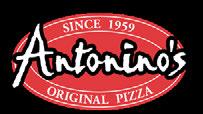





Nauti V’s is more than just an oyster bar! From premium meats to oysters to the freshest seafood including halibut and barramundi, pair one with a perfectly curated wine list. Nauti V’s accepts private parties.
1850 Wyandotte St E. Windsor 519-915-1166
Neros Steakhouse - Indulge in the finer things in life at Neros where modern upscale dining meets traditional steakhouse fare. Fresh, local ingredients, an incredible wine selection and superb service. OpenTable.ca 1-800-991-7777 ext. 22481.
O’Maggio’s Kildare House - A Windsor staple, an old Irish pub built in 1880. Multi-award winning Halibut Fish & chips, Hand Packed Burgers, and hearty entrees like the Guinness Beef Stew and chicken pot pie. Plus, 25 beers on tap.
1880 Wyandotte St E, Windsor 519-915-1066
Original Guys Pizza Pies - The “Windsor style” thin crust pizza skillfully rolled and hand tossed is cooked to perfection in a stone baked oven. With vegetarian and vegan options, pizzas are tailored to each customer’s individual taste. Also offering wings, salads and subs. 3335 Banwell Rd., Windsor. 519-979-8808. ogpizza.ca
Ortona 1864 Cafe & Panino - Freshly renovated cafe & panino bar. Breakfast offered every day at 8AM. Enjoy our menu featuring the Italian Benny, Porchetta Thursdays, Iced Matcha Lattes and fresh paninis made right in front of you!
1864 Wyandotte St E. Windsor 226-674-0500
Twigg’s Bar + Grill - Family oriented local establishment offering freshly prepared pubfare. We take pride in providing prompt service in a unique atmosphere with craft beer, specialty cocktails, daily specials, live entertainment, catering and more. 1207 County Rd 22, Emeryville 519-727-8704. www.twiggsbarandgrill.com
Vito’s Pizzeria - Rustic Italian restaurant serving wood-fired pizza, fresh pasta, veal, chicken, grilled steaks and seafood. Wonderful wine selection. Private party spaces. Food truck and portable pizza oven for offsite catering. 1731 Wyandotte St. E., Windsor. 519-915-6145. catering@vitospizzeria.com
For information on
and
in Bon Appetit! please call Leslie Campbell at 519-567-0603.

STORY BY MICHAEL SEGUIN PHOTOGRAPHY COURTESY OF TODD HESLOP
YOU MIGHT REMEMBER THE INCIDENT. On March 5th, 2023, a significant mechanical issue caused a vehicle to strike a building on Lesperance Road near Riverside Drive. The truck quickly erupted into flames that threatened to consume the driver. However, the driver was able to escape the resulting explosion thanks to the intervention of a local couple who happened to be passing by.
The driver was one Tommy Heslop and this is his story:
Don and Amber Rodzik are a charming couple. Two lifelong Windsorites, they’ve been married for twenty-four years and have raised three sons: Cameron, Christopher, and Hudson.
The two were driving home from dinner with their two younger boys on the night in question. Everything was proceeding as normal when Hudson spotted the flames.
“He asked if someone was having a bonfire,” Don recalls. “We thought maybe a tree had caught on fire. So I started to slow down as we approached the intersection.”
“Then we saw the accident,” Amber explains. “A truck was engulfed in six-foot-high


flames. It was like something out of a movie.”
They found Tommy’s truck embedded into the brick wall. Don immediately pulled over to investigate the crash. And it wasn’t long before they heard a voice through the rising fires.
“ Tommy was screaming for help,” Don states. “We told our sons to stay back while me and my wife wandered into the flames.”
Tommy was sprawled out next to his vehicle with his legs broken. All the while, the fires continued to climb higher around them. As well, the wreckage was emitting a piercing creaking sound and the windows had shattered from the heat.
“I told Don that we had to move him,” Amber explains. “We were afraid that something in the car was going to explode.”
And despite the obvious risk to themselves, Don and Amber waded into the smoke and the flames. They grabbed Tommy between them, hoisted him up and out of the blazing asphalt, and carried him to safety. And as it happens, their fears were not unfounded. The truck did explode after that—the three of them just narrowly escaping.




Things seemed to speed up after that. Christopher—Don and Amber’s middle son—called the police and emergency services quickly arrived. Meanwhile, Tommy was trembling all over and in shock. They fetched him a blanket from their car and Amber cradled him until the paramedics took him away.
“I just kept asking him questions,” Amber states. “I didn’t want him to go to sleep. He told me his name. That he went to Tecumseh Vista Academy—the same school as my youngest son. Christopher then recognized Tommy’s last name because he played hockey with his older brother, Trevor. Through that, we were able to contact his family.”
Before long, the paramedics attended to Tommy. They placed him in a stretcher and raced him to Windsor Regional Hospital’s Ouellette Campus where he would need serious medical attention.
Meanwhile, Todd Heslop—Tommy’s father—was driving home from Chatham with his older son after a hockey game. And while still on the road, he was contacted by Amber who told him everything.
“She was able to go into some detail about what happened,” Todd explains. “She didn’t want to scare us, but she told us that Tommy had experienced a serious injury. We reached the scene shortly thereafter and it was horrific. We spoke to some of the police and the paramedics, but we still didn’t know much. We didn’t even know if he was still alive.”
Todd takes a moment to compose himself.
“It was our worst nightmare,” Todd states. “As a parent, you never want something like that to happen to your child.”
And the extent of Tommy’s injuries were truly horrific. In addition to a broken leg, collarbone, ankle, pelvis, he was also suffering from a collapsed lung, ruptured bowels, and a fractured vertebrae—among others.
“He was shattered from the neck down,” Todd explains. “He was in the OR for thirteen-and-a-half hours. But our doctors were absolutely amazing, though. I can’t say enough good things about the quality of care he received.”
Even after that first day, Tommy required multiple other surgeries in the coming weeks. However, Todd continues to stress how much courage his son demonstrated in the face of such overwhelming pain.
“He never complained,” Todd states. “He never felt sorry for himself. He was very positive throughout the whole thing. He
just wanted to endure the procedures and get out of there. If that was me on the bed I would have been crying like a little girl!”
Fortunately, Tommy had some very specific motivation to recover.
“Mainly, I just wanted to get out of the hospital so I could see my dog again,” Tommy explains. “He’s a Mini Goldendoodle named Speedy. And he’s almost eighteen, so I just wanted to be able to go home and play with him as much as possible!”
But despite Tommy’s resolve, he did receive a pair of visitors that helped bolster his spirits.
“ We all cried when we saw him,” Amber admits. “And an experience like that leaves a lasting impact on both families. We still exchange Christmas cards every year. We have this connection with Tommy’s family now. And we know it will be lifelong.”
When asked what compelled them to react so quickly during such a fraught moment, Amber struggles to put such an experience into words.
“You don’t know how you’re going to respond until it happens,” Amber admits. “It was being at the right place, at the right time. It was also pure instinct. Don and I both jumped out of the car without a second thought. And we’d do it again in a heartbeat. If it were one of my boys in such a situation, I’d hope others would do the same thing.”
Don and Amber were both distinguished with the OPP Commissioner’s Citation for Bravery for their services.
And now, Tommy has made significant strides in his recovery, though he still faces some challenges as a result of the severity of his injuries. However, his future looks promising! He’s currently enrolled in the Border Services program at St. Clair College and is working at Taco Bell. He’s even well enough to take up golf—a pastime he enjoys with his friends.
And besides Tommy’s own tenacity and the talented medical staff, all this was possible thanks to Don and Amber—two concerned citizens who risked their own lives to save a stranger.
“I’m beyond grateful to Don and Amber,” Todd states. “They saved my son’s life— without a doubt. They’re amazing people. I was able to find video footage of the accident after the fact. And eleven cars passed by while the car was burning. Thankfully, Don and Amber were the twelfth car. If just one person reads this story and is inspired to pull over and help a stranger in need, then I’m happy.” WLM








before you can no longer explore the ruins. If the magical Andean mountains and the authentic Peruvian culture weren’t enough to convince me, this statement was.
I spent two weeks in Peru prepared with hiking gear and a nearly non-existent understanding of Spanish. I could tell you about our dune buggy ride around Huacachina Oasis, our queasy flight over the Nazsca lines, or our lackadaisical strolls through Cusco’s flower potted streets; but instead, I will focus only on the five days I spent hiking to the elusive Inca ruins situated high in the Andean mountains, the 7th Wonder of the World, Machu Picchu.
What could be so fascinating about a bunch of mortar-sealed stones? Besides the intricate handiwork of the Inca and pre-Inca civilizations, Machu Picchu is a testimony to a life we were not privy to, a history preserved and protected by a ring of towering mountains. It is difficult to get to because the Incas cherished their defensive location. Not only is Machu Picchu home to plenty of natural resources, being fed by a mountain spring that still trickles down into the valley below, but it is also protected by nature itself. The Quechua people refer to Mother Earth as “Pachamama,” and it is she who the Incas built temples for. To allow their reverence of nature to persist, Machu Picchu will soon be closed to tourists, save for a viewing platform. As someone who walked through each of the three circuits which take tourists through the ruins, I hope you do not miss your chance to experience the ancient city.
To reach Machu Picchu, you have two options. You can take the train to Aguas Calientes for $150 Cdn. round-trip, and then take a bus to the ruins for an additional fee. This option is preferred by those with physical limitations (such as difficulty acclimating to altitude) as well as those with a limited amount of time. However, there is a more thrilling option: hiking through the Andes to the ancient wonder. There are many trail options and many tour companies. We chose Alpaca Expeditions because they are the only local company. The most popular route is their 4-day/3-night Inca Trail which follows the original pathway that the Incas took into Machu Picchu. However, the 4 days/3 nights Lares Trek combined with the short Inca Trail of 2 days/1 night, is the best of both worlds.




We packed our necessities into a daypack and placed the rest of our belongings in duffle bags that porters carried up the trails to our campsite. Our guide and most of our crew, which included one cook, two porters, and two horsemen, were of Quechua heritage. Each day, the porters and horsemen set up our camp in Quechua communities in the mountains. Part of our payment goes directly to these local families for lending us their land. Three times a day, the cook made us exquisite feasts—platters of ceviche, guacamole, chicken, vegetables, and more—seemingly impossible to pull off with minimal equipment. On our last night of the Lares Trek, we were surprised with an entire cake that read “The Journey is the Destination.” Truly, each step of those 50 km (10 a day) was just as rewarding as reaching Machu Picchu itself.
Something about the Lares Trek that you won’t get with the other routes is the small group sizes. Our group consisted of 6 people, allowing us to rely on each other as we faced and conquered the struggles of altitude sickness, fatigue and mosquitoes. This experience wasn’t glamorous. It was a reversion to the Earth, a reminder that we too are animals trying to find our purpose. This means a portable toilet and exposure to the elements. But it also means sleeping under the Peruvian Milky Way and reconnecting with nature.
The first day was a gentle introduction to the hike. We were picked up from our accommodation in Cusco at 5:00 am to enjoy a mountain hot spring. Though it drizzled, we proceeded to hike 10 km with a lunch break halfway. Waterfalls decorated our trail, thundering reminders to go with the flow and keep walking. Along the way, we attracted a wayward dog who guided us through the winding paths for the duration of the Lares Trek. He provided much needed moral support.
The second day was the most difficult. We hiked to Condor’s Peak which sits at 15,300 ft. During the climb, I was struck by altitude sickness. It was impossible to walk more than five minutes without needing to catch my breath—and this is coming from someone who works out consistently. The lightheadedness was trying, but I pressed on. I am so grateful I did, because glaciers greeted me at the summit. The views brought tears to my eyes (or maybe it was the nausea). This is why it is advised to spend a few days in Cusco to get used to the altitude. Finally, after resting for half an hour, I acclimatized. I went to sleep under the stars feeling immensely proud of myself. s

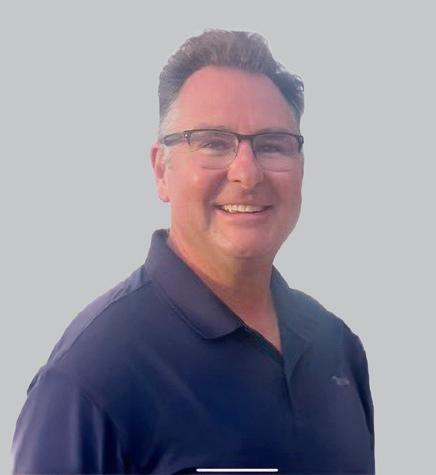
Call today to book your FREE hearing assessment. Looking
We service all makes and models—even hearing aids purchased elsewhere! We’re funding experts and will help you maximize available funding, so you pay the least amount. Plus, we match any Ontario competitor’s price!

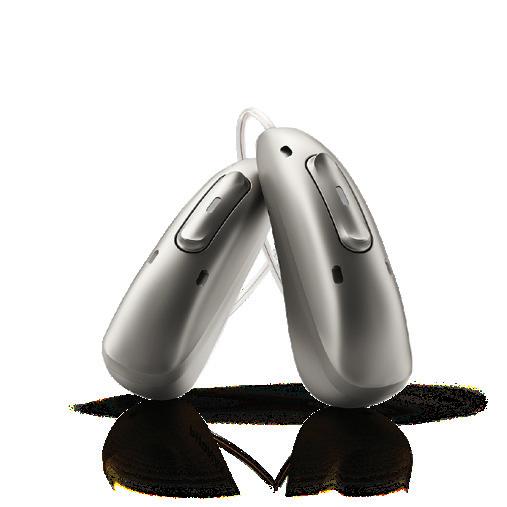
“As a woman in engineering, receiving the fellowship showed that diverse contributions are valued. It has been truly invaluable for both me and my family, giving me the confidence and encouragement to keep going. It is an opportunity to contribute to society through my research.”
- Halel Nazemi, Electrical Engineering PhD ‘25 Liburdi Engineering Doctoral Fellowship recipient
Halel’s PhD research is about developing sensors to detect gases more accurately, with the goal of helping doctors diagnose diseases like cancer earlier.

unlocks possibility. Give to UWindsor uwindsor.ca/supportuwindsor

Windsor Life Magazine...and Only Windsor Life Magazine
We will verify these numbers through Statements of Distribution at any time requested.






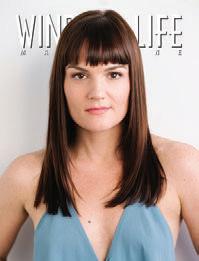
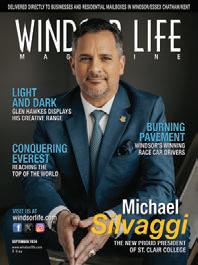
We deliver advertising messages for less than a penny per address and full page ads for less than six cents per address.
We will customize advertising for you and make getting your message to thousands, easy.
We have been fulfilling the advertising needs of many of the area’s best companies for over 32 years.
Let us help you include your business message in the area’s largest circulation publication.

519-818-7352
cthompson@windsorlife.com




I woke up with a puffy face—my nose and eyes had swelled to the size of a jumbo marshmallow. The elevation had struck again. Totally harmless, and fortunately, it faded away quickly. The third day was all downhill. We visited a school 10,000 ft in the mountains and then got a bus to the Mares Salt Flats. Our guides were accommodating when we requested a stop at the Mountain View. This is a place I recommend staying if you want to have a picnic with alpacas and llamas!
After wards, we said goodbye to our guides and group. In between the Lares Trek and the Inca Trail, we had one blissful stay at a hotel in picturesque Ollayntaytambo. We were picked up the next day at 6:00 am by our new, larger group. A train took us to kilometer 104 where we began the last leg of our journey. We hiked up stairs, and more stairs, and monkey stairs (where you have to climb using hands and feet). This was the second most difficult day as it was all uphill, though the elevation is lower than Condor’s Peak. This option is still more rewarding than taking the bus to Machu Picchu because we were able to see other Inca ruins like Wiñay Wayna and the Sun Gate (the original entrance to the Inca city) that most tourists miss.
Even after four days of ethereal views, nothing could have prepared me for the beauty of Machu Picchu. I couldn’t look away from the sheer magnitude and historical grandeur of the ruins. We were beyond blessed to have blue skies arching over Huayna Picchu. It was impossible to look at the Happy Mountain without being happy ourselves. After four days of rigorous hiking, we had made it. What was even more amazing was that after soaking in the view, we got to come back the following day to peruse the circuits. Since we did two trails, we visited all the circuits, allowing for a thorough tour.
Only then did I understand the concept of finding beauty within ruins. After suffering from altitude sickness and camping with minimal resources, I learned how to live small. Such a grand experience opens your eyes to the vastness of the world. The people living off-grid in the tall Andean mountains showed me the insignificance of our lives. We are but moments in the cosmos, singular stars, and sometimes it is enough to just shine. The purpose might be to reach a Wonder of the World, but perhaps it is much simpler. Perhaps it is enough to just be a wonderful part of the world. WLM
STORY BY MATTHEW ST. AMAND
PHOTOGRAPHY BY MICHAEL PIETRANGELO
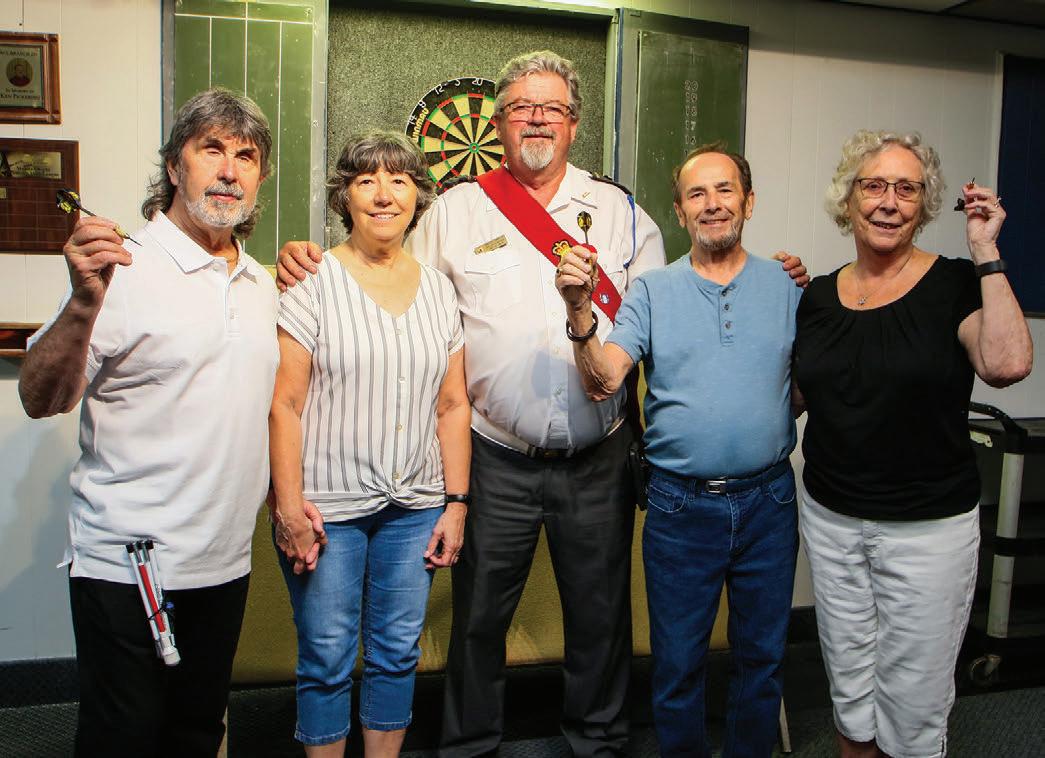
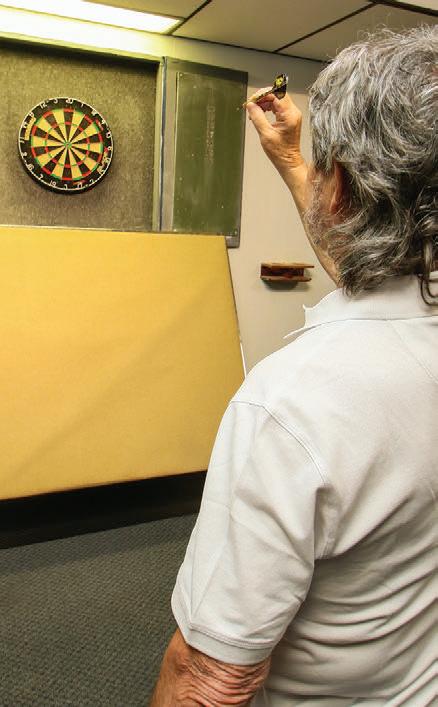

SOMETIMES, great ideas sound crazy at first. The idea for a darts league for blind and partially sighted people came up during a conversation between Sharron Jarvis and Peter Best, both of whom are legally blind. Sharron has some level of vision. Peter is totally blind.
“Last year, I was contacted by Shauna Boghean at the Canadian National Institute for the Blind,” Peter explains, “and she asked if I would meet with a woman who wanted to learn more about living as a visually impaired person.”
Peter is a longtime advocate for the blind and visually impaired in Windsor.
He met with Sharron at Branch 255 of the Royal Canadian Legion in late 2024.
“As we spoke, Sharron asked: ‘What kind of activities are there for blind people to do?’” Peter says.
He asked what types of activities were available in the Legion. “They have pool tables”, Sharron told him. Peter knew of visually impaired people playing pool.
“ What else do you have?” he said.
“Dart boards.”
“Perfect!” Peter said.
Sharron thought he was joking. “You want to have a bunch of visually impaired people throwing sharp objects around a crowded room?”
“ Why not?”
Years of advocacy have taught Peter to appreciate the absurd aspects of everyday life and that a sense of humour is an invaluable survival tool.
As it turned out, Peter’s outlook on life meshed with Sharron’s and his idea about the blind darts league soon did not sound so outlandish.

“I have been considered legally blind for the past forty years,” Sharron says. “The way I grew up was: You’ve got a problem? Learn a way around it. You can do anything you put your mind to. So, you have this eye problem—that shouldn’t stop you from doing anything. I’ve had a white cane for the last thirty years and only started using it last year.”
Sharron has lived in the City of Windsor for the past thirty-five years. She is married to a retired military man, she has raised two children and resided in a mesmerizing number of cities. After age forty, she earned a bachelor’s degree from the University of Windsor and a few years later, completed a master’s degree. Sharron is now retired, but every day of her working life in Windsor, she rode the bus across the city to her job.
She has been so busy running a household and living her life, Sharron never had a chance to get involved with the blind community.
By the end of her conversation with Peter, the outlines of a blind darts league had formed. Peter agreed to research how to actually do it, and Sharron said she would approach Legion Branch 255 about using their facilities.
“I went online and found a group in Minnesota that used plastic darts,” Peter says. “In Europe, darts for blind people is popular— they have tournaments where competitors win hundreds of thousands of dollars. They have a technique that uses fishing string attached to the bottom of a dart board, so the thrower has a feel for its location. That was fine, but I didn’t have any string. Then I thought: ‘All right, let’s have a guide and play free-handed.’ That’s the difference. We use no adaptive devices, just a guide who points us in the right direction.”
As it turned out, the executive of Legion Branch 255 welcomed the opportunity to host a blind darts league.
Beginning last February, Sharron and Peter launched a pilot project for the league and found interest for it in the community.
“ We had nine or ten regulars, all legally blind, who participated every Friday evening,” Sharron says. “We divided participants into three groups based on their level of vision.”
According to the International Blind Sports Association and International Paralympic Committee classification system, these levels are:
B1: From no light perception in either eye to light perception, but an inability to recognize the shape of a hand at any distance or in any direction.
B2: Ability to recognize objects up to a distance of two metres.
B3: Can recognize contours between two and six metres away.
“Each group had a coach/guide and a scorekeeper,” Sharron says. “The coaches are just wonderful! And, of course, safety came above all else.”
Once the coach/guide has the thrower lined up, he steps out of the way and says “Clear,” indicating that it’s safe to throw. Then the person throwing the dart says “Clear,” and makes their throw.
“There were a lot of misses, at first, darts going into the ceiling,” Peter said, “but it didn’t take long for participants to find their mark.”
Sharron remembers a great cheer going up among the spectators when a participant hit the board for the first time. Soon, though, the players dialed-in their throws and the games became competitive. There have even been a number of bullseyes. Peter threw one as he was filmed by local media for a TV segment.
To demonstrate the experience to sighted people, Peter explains: “I took three pairs of safety glasses to simulate B1, B2, B3 levels of vision. The B1 pair has black tape on the lenses. The B2 pair has Scotch tape across the lenses—it’s very fogged out. The B3 glasses have stripes in them to give a distorted look. We gave people the glasses, we set them up, and they threw three darts.”
“Everyone enjoyed the experience,” Sharron says. “We had two or three people who came out to join, but they could not continue due to transportation issues.”
The pilot project ended in May, but Peter and Sharron are meeting through the summer to discuss next steps.
“ We are looking to resume the league after Labour Day,” Peter says.
There is no question the pilot project for the blind darts league was successful.
“The Legion has been so welcoming,” Sharron says. “We hope that other organizations might start similar programs. It’s all about accessibility. People with challenges are capable of so much. Sometimes they just need the right opportunity and the right place to do that.”
“ We have had calls from as far away as Kingston and New Market asking for advice,” Peter says. “We are very grateful to Legion Branch 255 for letting us use their facility, and for the people who have come to watch us play.”
For more information about the blind darts league contact Sharron Jarvis through the Branch 255 of the Royal Canadian Legion at rclbr.on255@gmail.com or Peter Best at bestresolutions@outlook.com.



